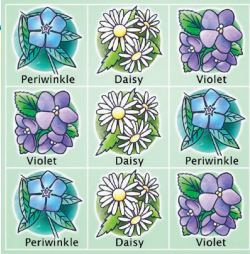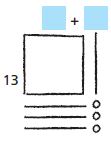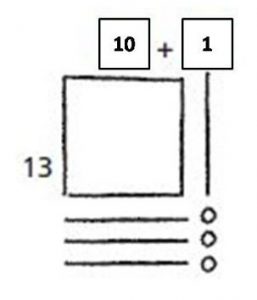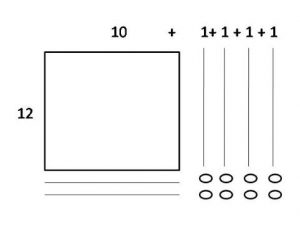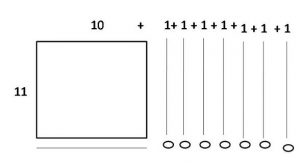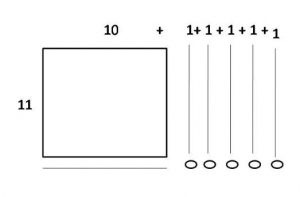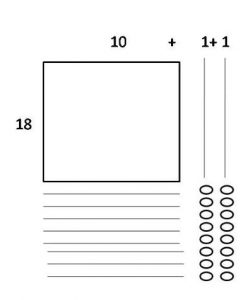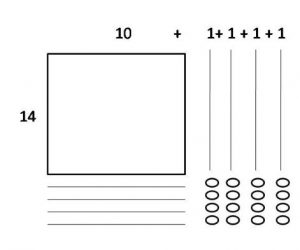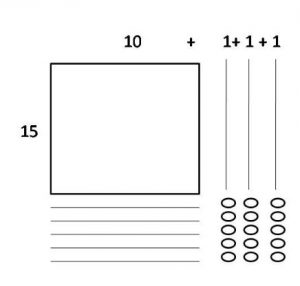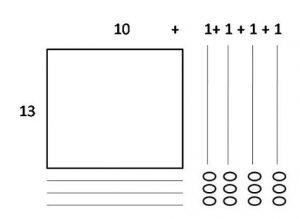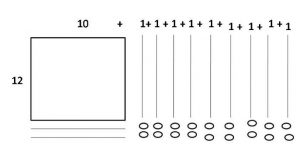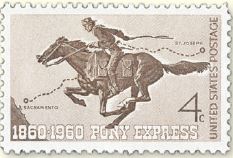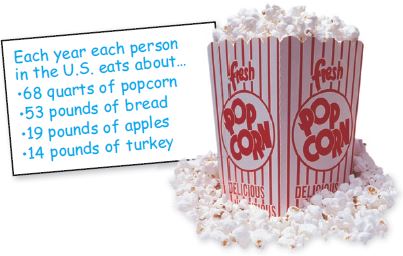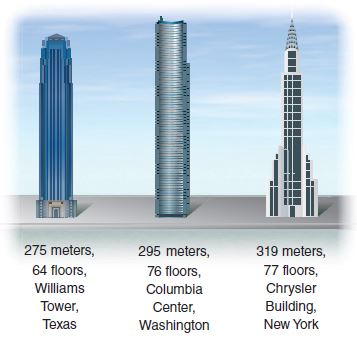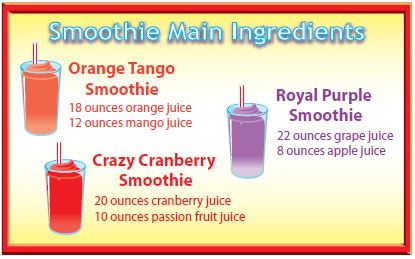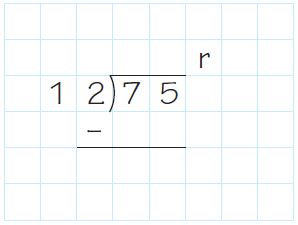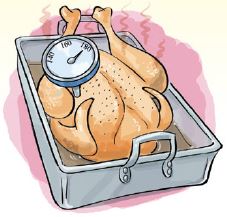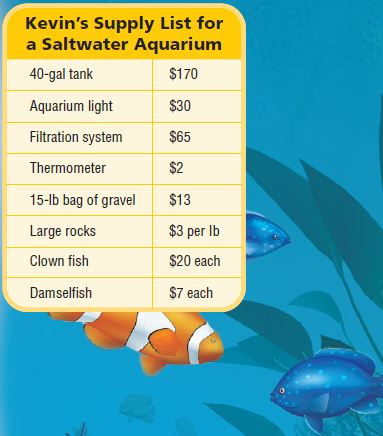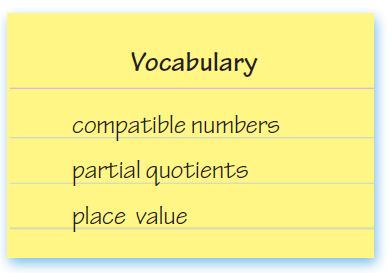Go Math Grade 3 Answer Key Chapter 4 Multiplication Facts and Strategies helps both Students and Teachers out there to get all the concepts underlying. HMH Go Math Grade 3 Answer Key will familiarize you with different models of Multiplication Facts and Strategies Questions in Exercises. Understand the logic behind each of the concepts taking the help of HMH Go Math Solution Key Grade 3. Go Math Answer Key Grade 3 Chapter 4 Multiplication Facts and Strategies will give you problem-solving skills rather than giving you simple answers.
Go Math Grade 3 Chapter 4 Multiplication Facts and Strategies Answer Key
Learning the basics of earlier grade chapters is quite necessary to lay a stronger foundation for higher grades. Practice using the Go Math Grade 3 Answer Key Chapter 4 Multiplication Facts and Strategies as much as possible and clear the assessments or homework with utmost confidence. Prepare which ever concept you wish to learn through the direct links available and make your learning effective.
Lesson 1: Multiply with 2 and 4
Lesson 2: Multiply with 5 and 10
Lesson 3: Multiply with 3 and 6
Lesson 4: Algebra • Distributive Property
Lesson 5: Multiply with 7
Mid-Chapter Checkpoint
Lesson 6: Algebra • Associative Property of Multiplication
- Associative Property of Multiplication Page No 227
- Associative Property of Multiplication Lesson Check Page No 228
Lesson 7: Algebra • Patterns on the Multiplication Table
- Patterns on the Multiplication Table Page No 233
- Patterns on the Multiplication Table Lesson Check Page No 234
Lesson 8: Multiply with 8
Lesson 9: Multiply with 9
Lesson 10: Problem Solving • Multiplication
Chapter 4 Review/Test
- Review/Test Page No 253
- Review/Test Page No 254
- Review/Test Page No 255
- Review/Test Page No 256
- Review/Test Page No 257
- Review/Test Page No 258
Multiply with 2 and 4 Page No 195
Write a multiplication sentence for the model.
Question 1.

Think: There are 2 groups of
5 counters.
Answer:
2 × 5 = 10
Explanation:
Draw 2 counters. Place 5 Objectives in 2 counters. Count the total number of objectives and them. Add 5 + 5 to get the answer. Finally, you get 10.
Question 2.

______ × ______ = ______
Find the product.
Answer:
4×3 = 12
Explanation:
Look at the above figure. You can see 4 Counters and 3 objectives on each counter. So, you have to multiply 4×3. When you multiply with 4, you can first multiply with 2 and then double the product. Multiply 3 with 2. You will get 2×3 is 6. Now, double the number 6. The final answer is 12.
Question 3.
2
× 6
——–
________
Answer:
2×6 = 12
Explanation:
When there is a multiplication requires with 2, you can double the given number 6 to get the final answer. The answer is 6+6 = 12.
Question 4.
4
× 8
———
________
Answer:
4×8 = 32
Explanation:
You can double 2×8 to get 4×8. Multiply 8 with 2. You will get 16. Then, double the product to get the answer to 4×8. You will get 16+16 = 32. So, you get the final answer as 32.
Question 5.
2
× 3
——–
________
Answer:
2×3 = 6
Explanation:
Draw two counters. Place three objectives in two counters. Now, add the objectives in two counters. The final answer is 3+3 = 6. So, 2×3=6 is the answer.
Question 6.
4
× 6
———
_________
Answer:
4×6 = 24
Explanation:
You can double 2×6 to get 4×6. Multiply 6 with 2. You will get 12. Then, double the product to get the answer to 4×6. You will get 12+12 = 24. So, you get the final answer as 24.
Question 7.
4
× 4
———
_________
Answer:
4×4 = 16
Explanation:
Multiply 4 with 2. 2×4 = 8. Now, double the number 8. 8+8 = 16. The answer for 4×4 is 16
Question 8.
2
× 7
——–
_________
Answer:
2×7 = 14
Explanation:
The given multiplication is 2×7. The answer to any number multiplies with 2 is double of that number. So, the 2×7 can find by doing 7+7. The answer is 7+7 = 14. So, the final answer is 2×7 = 14.
Question 9.
4
× 5
———
_________
Answer:
4×5 = 20
Explanation:
Firstly, multiply 2×5 to get the answer for 4×5. Then, double the answer of 2×5 to get the final answer. So, do 2×5 = 10. Double the number 10 to get the 4×5 Answer. The double of 10 is 10+10 = 20. The answer to 4×5 is 20.
Question 10.
2
× 4
——–
_________
Answer:
2×4 = 8
Explanation:
The multiplication begins with 2. So, you can double 4 to get the answer of 2×4. The double of 4 is 4+4 = 8. The answer for 2×4 is 8.
Problem Solving
Question 11.
On Monday, Steven read 9 pages of his new book. To finish the first chapter on Tuesday, he needs to read double the number of pages he read on Monday. How many pages does he need to read on Tuesday?
__________ pages
Answer:
18
Explanation:
Steven read 9 pages of his new book on Monday. He wants to finish his first chapter on Tuesday. To finish the chapter, he needs to double the number of pages he read on Monday.
Double of pages read on Monday = 9 x 2 =18.
Steven needs to read 18 pages on Tuesday.
Question 12.
Courtney’s school is having a family game night. Each table has 4 players. There are 7 tables in all. How many players are at the game night?
__________ players
Answer:
28
Explanation:
From the given information Courtney’s school is having a family game night. Each table has 4 players. There are 7 tables in all. So, every table has 4 players. To know the total number of players at the game night, we need to multiply 7 with 4.
Total Number of players at the game night = 7 x 4 = 28.
Multiply with 2 and 4 Lesson Check Page No 196
Lesson Check
Question 1.
Which multiplication sentence matches the model?

Options:
a. 3 × 2 = 6
b. 4 × 2 = 8
c. 4 × 4 = 16
d. 4 × 8 = 32
Answer:
b
Explanation:
The above figure consists of 4 counters. Also, each counter has two objectives in it. So, we need to multiply the number of counters with a number of objectives. The answer is 4×2 = 8.
Question 2.
Find the product.
2
× 8
——-
________
Options:
a. 10
b. 14
c. 16
d. 18
Answer:
c
Explanation:
To solve the 2×8, double the number 8. The answer for 2×8 is 8+8. So, the final answer is 2×8 = 16.
Question 3.
Sean made a picture graph to show his friends’ favorite colors. This is the key for the graph.
Each Ο = 2 friends.
How many friends does Ο Ο Ο Ο stand for?
Options:
a. 4
b. 8
c. 20
d. 40
Answer:
b
Explanation:
Sean made 4 picture graphs to show his friends’ favorite colors. Each Ο represents 2 friends. So, to find the final answer, we need to add all the colors. As there are 4 picture graphs you need to do 2+2+2+2 = 8. There are 8 friends available.
Question 4.
The table shows the lengths of some walking trails.
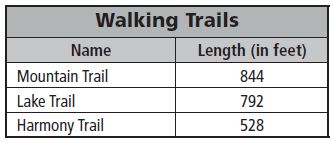
How many feet longer is Mountain Trail than Harmony Trail?
Options:
a. 216 feet
b. 264 feet
c. 316 feet
d. 528 feet
Answer:
c
Explanation:
In the above table, we can see three different walking trails lengths of three persons. The walking trail length of the Mountain is 844feets. The walking trail length of Lake is 792 feet. Also, the Harmony walking trail length is 528 feet. To get How many feet longer is Mountain Trail than Harmony Trail, we need to subtract Harmony walking trail length from Mountain Trail length. So, now we have to do 844-528 which is equal to 316 feet. So, Mountain Trail walked 316 feet than Harmony trail.
Question 5.
Find the sum.
5 2 7
+ 1 5 4
———-
Options:
a. 373
b. 581
c. 671
d. 681
Answer:
c
Explanation:
Break apart the addends from the given values. Start with the hundreds. Then, add each place value.
Let’s write 527 as 500+20+7 and 154 as 100+50+4.
Sum up the above two values. Then you get 600+70+11. Add the ones and then add the 10’s and 100’s. The final answer is 681.
Question 6.
A bar graph shows that sports books received 9 votes. If the scale is 0 to 20 by twos, where should the bar end for the sports books?
Options:
a. between 8 and 10
b. on 10
c. on 8
d. between 6 and 8
Answer:
c
Explanation:
As per the given data, the sports books received 9 votes. If we take a bar graph with a scale of 0 to 20 by twos, the graph is 0, 2, 4, 6, 8, 10, 12, 14, 16, 18, 20. So, the number 9 will lies between numbers 8 to 10. Therefore, the answer is between 8 and 10.
Multiply with 5 and 10 Page No 201
Find the product.
Question 1.
5 × 7 = 35
Answer:
35
Explanation:
Skip count by 5’s until you say 7 numbers. 5, 10, 15, 20, 25, 30, 35. Now, the count of the number is 7. So, the answer for 5 x 7 is 35.
Question 2.
5 × 1 = _______
Answer:
5
Explanation:
Any number multiplied by 1 is the same number. So, the answer is 5.
Question 3.
2 × 10 = _______
Answer:
20
Explanation:
A multiple of 10 is any product that has 10 as one of its factors. So, the multiplication of any number with 10 is 10’s of that particular number. The answer is 20.
Question 4.
________ = 8 × 5
Answer:
40
Explanation:
From Commutative Law of Multiplication, you can write 8 x 5 = 5 x 8. So, to find the multiplication of 5 x 8, Skip count by 5’s until you say 8 numbers. 5, 10, 15, 20, 25, 30, 35, 40. Now, the count of the number is 8. So, the answer for 5 x 8 is 40. Therefore, the answer for 8 x 5 is 40.
Question 5.
1 × 10 = ________
Answer:
10
Explanation:
Multiplication of any number with 1 is the same number. So, 1 x 10 = 10.
Question 6.
_______ = 4 × 5
Answer:
20
Explanation:
Using the Commutative Law of Multiplication, you can write 4 x 5 = 5 x 4. Now, Skip count by 5’s until you say 4 numbers. 5, 10, 15, 20. Therefore, the answer for 5 x 4 is 20.
Question 7.
5 × 10 = _______
Answer:
50
Explanation:
Skip-count by 5’s 10 times. You can write as 5, 10, 15, 20, 25, 30, 35, 40, 45, 50. The answer for 5 x 10 is 50.
Question 8.
7 × 5 = ________
Answer:
35
Explanation:
Write 7 x 5 as 5 x 7 according to the Commutative Law of Multiplication. Now do multiply for 5 x 7. skip-count by 5’s seven times. Now, you can write as 5, 10, 15, 20, 25, 30, 35. The answer for 5 x 7 is 35. So, the answer for 7 x 5 also 35.
Question 9.
_______ = 5 × 5
Answer:
25
Explanation:
Skip-count by 5’s 5 times. You can get 5, 10, 15, 20, 25. The answer for 5 x 5 is 25.
Question 10.
5 × 8 = _________
Answer:
40
Explanation:
You can Skip-count by 5’s 8 times. Write like 5, 10, 15, 20, 25, 30, 35, 40. So, the answer for 5 x 8 is 40.
Question 11.
______ = 5 × 9
Answer:
45
Explanation:
The multiplication of 5 × 9 is calculated as Skip-count by 5’s 9 times. You can write as 5, 10, 15, 20, 25, 30, 35, 40, 45. The final answer for 5 × 9 is 45.
Question 12.
10 × 0 = _________
Answer:
0
Explanation:
Multiplication of any number with 0 is 0. So, the answer for 10 x 0 is 0.
Question 13.
5
× 6
——–
________
Answer:
30
Explanation:
Skip count by 5’s until you say 6 numbers. 5, 10, 15, 20, 25, 30. So, the answer for 5 x 6 is 35.
Question 14.
10
× 7
———
________
Answer:
70
Explanation:
Add 10’s until you say 7 numbers. Now, you can write as 10 + 10 + 10 + 10 + 10 + 10 + 10. Now, add the 10’s to get the final answer. There are seven 10’s available. So, the answer is 70.
Question 15.
5
× 3
——–
________
Answer:
15
Explanation:
Skip count by 5’s until you say 3 numbers. Write like 5, 10, 15. The answer for 5 x 3 is 15.
Question 16.
10
× 4
——–
_________
Answer:
40
Explanation:
Add 10’s until you say 4 numbers. Then, write like 10 + 10 + 10 + 10 to get the answer. The answer for 10 x 4 is 40.
Question 17.
5
× 0
——-
_________
Answer:
0
Explanation:
Multiplication of any number with 0 is 0. So, the answer for 5 x 0 is 0.
Question 18.
10
× 8
——-
__________
Answer:
80
Explanation:
You have to add 10’s until you say 8 numbers. Write as 10 + 10 + 10 + 10 + 10 + 10 + 10 + 10. Now, add the 10’s to get the final answer. There are eight 10’s available. So, the answer for 10 x 8 is 80.
Question 19.
5
× 2
——-
__________
Answer:
10
Explanation:
Skip count by 5’s until you say 2 numbers. Write like 5, 10. The answer for 5 x 2 is 10.
Question 20.
10
× 6
——–
_________
Answer:
60
Explanation:
Add 10’s until you say 6 numbers. Write as 10 + 10 + 10 + 10 + 10 + 10. Now, add the 10’s to get the final answer. So, the answer for 10 x 6 is 60.
Problem Solving
Question 21.
Ginger takes 10 nickels to buy some pencils at the school store. How many cents does Ginger have to spend?
________ cents
Answer:
50
Explanation:
From the given data, Ginger takes 10 nickels to buy some pencils at the school store. One nickel can be treated as 5 cents. So, 10 nickels value is 10 nickels x 5 cents = 50 cents.
Ginger has to spend 50 cents to buy some pencils at the school store.
Question 22.
The gym at Evergreen School has three basketball courts. There are 5 players on each of the courts. How many players are there in all?
__________ players
Answer:
15
Explanation:
As per the given data, the gym at Evergreen School has three basketball courts. There are 5 players on each of the courts. The number of players in there in all = 3 basketball courts x 5 players = 15 players.
15 players are available in total.
Multiply with 5 and 10 Lesson Check Page No 202
Question 1.
Mrs. Hinely grows roses. There are 6 roses on each of her 10 rose bushes. How many roses in all are on Mrs. Hinely’s rose bushes?
Options:
a. 16
b. 54
c. 60
d. 66
Answer:
60
Explanation:
There are 10 rose bushes available. In each rose bush, Mrs. Hinely growing 6 roses. So, to find the number of roses, you need to multiply 10 x 6. The multiplication of 10 x 6 is 60. The number of roses in all are on Mrs. Hinely’s rose bushes are 60.
Question 2.
Find the product.
5
× 8
——-
Options:
a. 8
b. 16
c. 35
d. 40
Answer:
40
Explanation:
Skip-count by 5’s 8 times. Write like 5, 10, 15, 20, 25, 30, 35, 40. So, the answer for 5 x 8 is 40.
Spiral Review
Question 3.
Mr. Miller’s class voted on where to go for a field trip. Use the picture graph to find which choice had the most votes.
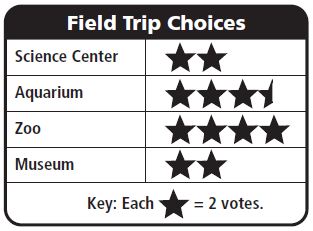
Options:
a. Science Center
b. Aquarium
c. Zoo
d. Museum
Answer:
c. Zoo
Explanation:
From the given figure, Mr. Miller’s class voted for a field trip. From the table, every start represents 2 votes. It is mentioned that for the Science Center, Mr. Miller’s given two starts. As one star represents 2 votes, he gave 4 votes for Science Center. Similarly, Aquarium = 3 and a half stars. The half star represents one vote. So, the number of votes given for the Aquarium is 7. For Zoo, he has given 4 stars. So, every start means 2 votes. The total number of votes is 8. Finally, the number of starts for the Museum is 2. So, the total number of votes is 4.
Mr. Miller’s class is given a high number of votes for Zoo. So, Mr. Miller’s class wishes to go for Zoo.
Question 4.
Zack made this table for his survey.

How many students were surveyed in all?
Options:
a. 38
b. 43
c. 47
d. 49
Answer:
c. 47
Explanation:
Zack prepared a table of flavors and votes. So, every vote represents one person. By adding the total number of votes, we can get the total number of students participated in ina survey.
Add 16 + 10 + 9 + 12 = 47. 47 students were surveyed in all to vote for their favorite juice.
Question 5.
Which of the following numbers is even?
25, 28, 31, 37
Options:
a. 25
b. 28
c. 31
d. 37
Answer:
b. 28
Explanation:
Even numbers are divided by 2. Also, even numbers end with a digit of 0, 2, 4, 6, or 8. So, the given number out of the given numbers is 28. It is ended with 8 and also it can divide by 2.
Question 6.
Estimate the sum.
4 7 9
+ 8 9
———
Options:
a. 568
b. 400
c. 500
d. 600
Answer:
a. 568
Explanation:
Add the ones. Regroup the ones as tens and ones. So, 9 + 9 = 18. Remain the 8 same and add the 1 to the tens. Add the tens. Regroup the tens as hundreds and tens. Now, add 7 + 8 + 1 = 16. place the 6 in the tens place and move the 1 to hundreds. Add the hundreds now. 4 + 1 = 5. So, now place the numbers in order. The final answer is 568.
Note:The option is modified for the above question. There is no correct answer available in the given options. So, option a is changed to the correct answer. The answer is explained with the place value to add two addends method.
Multiply with 3 and 6 Page No 207
Find the product.
Question 1.
6 × 4 = 24
Think: You can use doubles.
3 × 4 = 12
12 + 12 = 24
Answer:
24
Explanation:
By using doubles, we can find a 6 x 4 value. First, multiply the factor with half of 6. So, now we can do 3 x 4 = 12. Now, we can double the value of 3 x 4. That is 12 + 12 = 24. So, the answer for 6 x 4 = 24.
Question 2.
3 × 7 = _______
Answer:
21
Explanation:
Skip count by 3’s until you say 7 numbers. 3, 6, 9, 12, 15, 18, 21. So, the answer for 3 x 7 is 21.
Question 3.
________ = 2 × 6
Answer:
12
Explanation:
With the Commutative Law of Multiplication, you can write 2 x 6 as 6 x 2. Multiply the factor 2 with 5 and then add the factor to it to get the final answer. First, multiply the factor with 5. That is 5 x 2 = 10. Now, add the factor with the answer of 5 x 2. 10 +2 = 12. The answer for 6 x 2 is 12. So, the answer for 2 x 6 is 12.
Question 4.
________ = 3 × 5
Answer:
15
Explanation:
You can skip count by 3’s until you say 5 numbers. 3, 6, 9, 12, 15. So, the final answer for 3 x 5 is 15.
Question 5.
1 × 3 = ________
Answer:
3
Explanation:
Multiplication of any number with 1 is the same number. So, 1 x 3 = 3.
Question 6.
________ = 6 × 8
Answer:
48
Explanation:
Use doubles to find the answer of 6 x 8. Firstly, multiply 3 x 8 = 24. Then, double the value of 3 x 8. 24 + 24 = 48. The answer for 6 x 8 is 48.
Question 7.
3 × 9 = ________
Answer:
27
Explanation:
Skip count by 3’s until you say 9 numbers. Write like 3, 6, 9, 12, 15, 18, 21, 24, 27. The answer for 3 x 9 is 27.
Question 8.
_______ = 6 × 6
Answer:
36
Explanation:
Use doubles to find the answer of 6 x 6. Firstly, multiply 3 x 6 = 18. Then, double the value of 3 x 6. 18 + 18 = 36. The answer for 6 x 6 is 36.
Question 9.
4
× 3
——
________
Answer:
12
Explanation:
Write 4 x 3 as 3 x 4 according to the Commutative Law of Multiplication. Now do multiplication for 3 x 4. skip-count by 3’s four times. Now, you can write as 3, 6, 9, 12. The answer for 3 x 4 is 12. So, the answer for 4 x 3 also 12.
Question 10.
6
× 5
——
_________
Answer:
30
Explanation:
Multiply the given factor 5 with 5. Then, add 5 to the answer to get the answer for 6 x 5. Firstly, multiply 5 x 5 = 25. Add 5 to 25. 5 + 25 = 30. So, the answer for 6 x 5 is 30.
Question 11.
2
× 3
——
_________
Answer:
6
Explanation:
Using the Commutative Law of Multiplication, you can write 2 x 3 = 3 x 2. Now, Skip count by 3’s until you say 2 numbers. 3, 6. Therefore, the answer to 3x 2 is 6. The answer for 2 x 3 is 6.
Question 12.
6
× 3
——–
_________
Answer:
18
Explanation:
Double the value of 3 x 3 to get the answer for 6 x 3. The answer for 3 x 3 = 9. Now, double the value of 9. The answer for 6 x 3 is 9 + 9 = 18.
Question 13.
10
× 6
——-
_________
Answer:
60
Explanation:
Using the Commutative Law of Multiplication, you can write as 10 x 6 = 6 x 10. Now, multiply the 10 with 5. The answer is 5 x 10 = 50. Now, add the 10 to 50 to get the answer. The answer for 6 x 10 is 10 + 50 = 60. So, the answer for 10 x 6 is 60.
Question 14.
3
× 6
——-
__________
Answer:
18
Explanation:
Skip-count by 3’s 6 times. You can write as 3, 6, 9, 12, 15, 18. The answer for 3 x 6 is 18.
Question 15.
7
× 6
——-
__________
Answer:
42
Explanation:
With the help of the Commutative Law of Multiplication, you can change 7 x 6 to 6 x 7. Double the value of 3 x 7 to get 6 x 7. Now, do 3 x 7 = 21. Double the 21. 21 + 21 = 42. The answer for 6 x 7 = 42. So, the answer for 7 x 6 is 42.
Question 16.
3
× 0
——-
_________
Answer:
0
Explanation:
Multiplication of any number with 0 is 0. So, the answer for 3 x 0 is 0.
Question 17.
9
× 6
——-
__________
Answer:
54
Explanation:
Write 9 x 6 as 6 x 9 using the Commutative Law of Multiplication. Multiply the 9 with 5. 5 x 9 = 45. Now add the 45 to the 9. So, the answer for 6 x 9 is 45 + 9 = 54. Therefore, the answer for 9 x 6 is 54.
Question 18.
3
× 3
——-
__________
Answer:
9
Explanation:
Skip count by 3’s until you say 3 numbers. 3, 6, 9. So, the answer for 3 x 3 is 9.
Question 19.
10
× 3
——–
___________
Answer:
30
Explanation:
Use Commutative Law of Multiplication to write 10 x 3 to 3 x 10. Now, skip count by 3’s until you say 10 numbers. 3, 6, 9, 12, 15, 18, 21, 24, 27, 30. So, the answer for 3 x 10 is 30. Therefore, the answer for 10 x 3 is 30.
Question 20.
1
× 6
——–
________
Answer:
6
Explanation:
Multiplication of any number with 1 is the same number. So, 1 x 6 = 6.
Problem Solving
Question 21.
James got 3 hits in each of his baseball games. He has played 4 baseball games. How many hits has he had in all?
_________ hits
Answer:
12 hits
Explanation:
As per the given data, James got 3 hits in each of his baseball games. He has played 4 baseball games. To find the number of hits has he had in all, we need to multiply, 3 hits x 4 baseball games. So, the answer is 3 x 4 = 12 hits.
Question 22.
Mrs. Burns is buying muffins. There are 6 muffins in each box. If she buys 5 boxes, how many muffins will she buy?
__________ muffins
Answer:
30 muffins
Explanation:
From the provided information, Mrs. Burns is buying muffins. She is going to buy 5 boxes each has 6 muffins in it. So, to find the total number of muffins, we need to multiply, number of boxes and number of muffins in it. The total number of muffins = 6 x 5 = 30. She is going to buy 30 muffins.
Multiply with 3 and 6 Lesson Check Page No 208
Question 1.
Paco buys a carton of eggs. The carton has 2 rows of eggs. There are 6 eggs in each row. How many eggs are in the carton?
Options:
a. 8
b. 12
c. 14
d. 24
Answer:
b. 12
Explanation:
From the given data, Paco buys a carton of eggs. The carton has 2 rows in it. Every row has 6 eggs. To find the number of eggs, we need to multiply the number of rows and the number of eggs for each row. Therefore, the number of eggs in the carton are 2 x 6 = 12. 12 eggs are available in the carton.
Question 2.
Find the product.
9
× 3
——
Options:
a. 18
b. 24
c. 27
d. 36
Answer:
c. 27
Explanation:
Use Commutative Law of Multiplication to write 9 x 3 to 3 x 9. Now, skip count by 3’s until you say 9 numbers. 3, 6, 9, 12, 15, 18, 21, 24, 27. So, the answer for 3 x 9 is 27. Therefore, the answer for 9 x 3 is 27.
Spiral Review
Question 3.
Find the difference.
5 6 8
– 2 8 3
———
Options:
a. 285
b. 325
c. 385
d. 851
Answer:
a. 285
Explanation:
Subtract the ones. 8 – 3 = 5. Then, Subtract the tens. 6 < 8. So, regroup 5 hundreds 6 tens equal to 4 hundreds 8 tens. 16 – 8 = 8. Subtract the hundreds and add them to check the answer. 4 – 2 = 2. The final answer is 285.
Question 4.
Dwight made double the number of baskets in the second half of the basketball game than in the first half. He made 5 baskets in the first half. How many baskets did he make in the second half?
Options:
a. 7
b. 9
c. 10
d. 20
Answer:
c. 10
Explanation:
Given that Dwight made double the number of baskets in the second half of the basketball game than in the first half. He made 5 baskets in the first half. So, to find the second half baskets, we need to double the baskets in the first half. Baskets in the second half = 5 x 2 = 10.
Question 5.
In Jane’s picture graph, the ???? smile symbol represents two students. One row in the picture graph has 8 symbols. How many students does that represent?
Options:
a. 40
b. 32
c. 24
d. 16
Answer:
d. 16
Explanation:
From Jane’s picture graph, the ???? smile symbol represents 2 students. The one row in the picture graph has 8 symbols. To find the total number of students, we need to multiply the number of smiles and the number of students for each smile. The number of students for a row is 8 x 2 = 16.
Question 6.
What multiplication sentence does this array show?
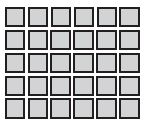
Options:
a. 5 × 6 = 30
b. 6 × 6 = 36
c. 5 × 5 = 25
d. 1 × 6 = 6
Answer:
a. 5 × 6 = 30
Explanation:
The given array shows that it has 6 boxes for a row and 5 boxes for a column. So, by multiplying the number of rows x number of columns the correct answer is 6 x 5 = 30. By using the Commutative Law of Multiplication, we can write 6 x 5 = 5 x 6. So, the answer from the given options is 5 × 6 = 30.
Distributive Property Page No 213
Write one way to break apart the array.
Then find the product.
Question 1.
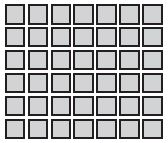
(3 × 7) + (3 × 7)
42
Answer:
42
Explanation:
The given array is 6 x 7. Use the Distributive Property to get the final answer. Break the array rows to make two smaller arrays with the facts 3 and 3. Now, you can write the given array as (3 + 3) x 7. Then, multiply each addend with 7. The equation becomes (3 x 7) +(3 x 7). Now simplify and add them to get the final answer. 21 + 21 = 42.
Question 2.

_________
Answer:
32
Explanation:
The given array has 8 columns and 4 rows. Simplify the answer using Distributive Property. Now, break the array rows to make two smaller arrays with the facts 2 and 2. To get the answer, we have to write 4 x 8. By doing smaller arrays, you can write it as (2 + 2) x 8. Multiply each addend with 8. The equation becomes (2 x 8) +(2 x 8). Now simplify and add them to get the final answer. 16 + 16 = 32.
Question 3.
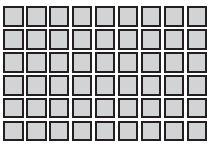
___________
Answer:
54
Explanation:
The given figure has 9 columns and 6 rows. Use Distributive Property to get the answer of a given array. Let’s break the array rows with two smaller arrays with the facts 3 and 3. Now, write the equation as 6 x 9 = (3 + 3) x 9. Multiply each 3 with 9. 27 + 27. The final answer is 54.
Question 4.
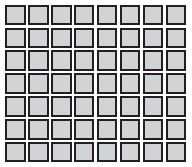
_________
Answer:
56
Explanation:
The given array has 8 columns and 7 rows. With the help of Distributive Property, you can solve the given array. Break the array columns with two smaller arrays with the facts 4 and 4. Write the equation as (7 x 4) + (7 x 4) = 28 + 28 = 56.
Problem Solving
Question 5.
There are 2 rows of 8 chairs set up in the library for a puppet show. How many chairs are there in all? Use the Distributive Property to solve.
____________ chairs
Answer:
16
Explanation:
From the given information, there are 2 rows of 8 chairs set up in the library for a puppet show. So, in the array, there are 2 rows and 8 columns. To find the answer, we have to multiply 2 x 8. Using Distributive Property, we can solve 2 x 8. Sum the number 2 with facts 1 and 1. So, we can write as (1 + 1) x 8. Simplify the answer by multiplying each addend to 8. (1 x 8) + (1 x 8) = 8 + 8 = 16. There are 16 chairs available in 2 rows.
Question 6.
A marching band has 4 rows of trumpeters with 10 trumpeters in each row. How many trumpeters are in the marching band? Use the Distributive Property to solve.
___________ trumpeters
Answer:
40
Explanation:
From the given information, a marching band has 4 rows of trumpeters with 10 trumpeters in each row. To know the number of trumpeters, we have to calculate 4 x 10. With the help of Distributive Property, you can separate the one number with its sums. Now write the 4 with its sums 2 and 2. (2 + 2) x 10. Now, you can multiply each addend with 10. (2 x 10) + (2 x 10) = 20 + 20 = 40. 40 trumpeters are in the marching band.
Distributive Property Lesson Check Page No 214
Question 1.
Which number sentence is an example of the Distributive Property?
Options:
a. 7 × 6 = 6 × 7
b. 7 × (2 × 3) = (7 × 2) × 3
c. 7 × 6 = (7 × 3) + (7 × 3)
d. 7 + 6 = 7 + 3 + 3
Answer:
c. 7 × 6 = (7 × 3) + (7 × 3)
Explanation:
Distributive Property: The Distributive Property states that multiplying a sum by a number is the same as multiplying each addend by the number and then adding the products. So, from the given options, c. 7 × 6 = (7 × 3) + (7 × 3) is the correct answer.
Question 2.
What is one way to break apart the array?

Options:
a. (2 × 6) + (2 × 6)
b. (4 × 2) + (4 × 2)
c. (4 × 4) + (4 × 4)
d. (6 × 3) + (6 × 3)
Answer:
a. (2 × 6) + (2 × 6)
Explanation:
The given figure has 6 columns and 4 rows. By using Distributive Property, you can find the answer easily. Let’s break the array rows with two smaller arrays with the facts 2 and 2. Now, write the equation as 4 x 6 = (2 + 2) x 6. Multiply each 2 with 6. the equation can be written as (2 x 6) + (2 x 6).
Spiral Review
Question 3.
The school auditorium has 448 chairs set out for the third grade performance. What is 448 rounded to the nearest ten?
Options:
a. 500
b. 440
c. 450
d. 400
Answer:
c. 450
Explanation:
Given that the school auditorium has 448 chairs set out for the third-grade performance. The 448 number lies between 440 and 450. 448 is closer to 450 than it is to 440. So, 448 rounds to 450.
Question 4.
Find the difference.
4 0 0
– 2 9 6
———-
Options:
a. 104
b. 114
c. 204
d. 296
Answer:
a. 104
Explanation:
Subtract the ones. 0<6. so regroup 0 tens 0 ones = 1 tens 4 ones. Now, do 10 – 6 = 4. Then, Subtract the tens. 9 = 9. So, so regroup. 4 hundred 9 tens = 3 hundred 4 tens. 9 – 9 = 0. Subtract the hundreds and add them to check the answer. 3 – 2 = 1. The final answer is 104.
Question 5.
There are 622 fruit snacks in one crate and 186 in another crate. How many fruit snacks are there in all?
6 2 2
+ 1 8 6
———-
Options:
a. 436
b. 708
c. 768
d. 808
Answer:
d. 808
Explanation:
Break apart the addends from the given values. Start with the hundreds. Then, add each place value. Let’s write 622 as 600 + 20 + 2 and 186 as 100 + 80 + 6.
Sum up the above two values. Then you get 700 + 100 + 8. Add the ones and then add the 10’s and 100’s. The final answer is 808.
Question 6.
Which sport do 6 students play?
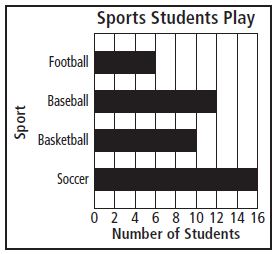
a. Football
b. Baseball
c. Basketball
d. Soccer
Answer:
a. Football
Explanation:
From the given picture, it is mentioned that the sports students play and the number of students for that game. As mentioned, Football needs 6 students. Baseball needs 12 students. Basketball needs 10 students. Also, Soccer needs 16 students. So, the answer is Football sport required 6 students to play.
Multiply with 7 Page No 219
Find the product.
Question 1.
6 × 7 = 42
Answer:
42
Explanation:
By using doubles, we can find a 6 x 7 value. First, multiply the factor with half of 6. So, now we can do 3 x 7 = 21. Now, we can double the value of 3 x 7. That is 21 + 21 = 42. So, the answer for 6 x 7 = 42.
Question 2.
________ = 7 × 9
Answer:
63
Explanation:
Use the Distributive Property to find the value of 7 x 9. If we take 7 rows and 9 columns of an array, then we can break the array into two smaller arrays with the facts of 9. Now, write the 7 x 9 as 7 x (6 + 3). Multiply the facts with the 7. Then, you get (7 x 6) + (7 x 3). Therefore, you get the answer as 42 + 21 = 63.
Question 3.
_______ = 1 × 7
Answer:
7
Explanation:
Multiplication of any number with 1 is the same number. So, 1 x 7 = 7.
Question 4.
3 × 7 = _______
Answer:
21
Explanation:
Skip count by 3’s until you say 7 numbers. 3, 6, 9, 12, 15, 18, 21. So, the answer for 3 x 7 is 21.
Question 5.
7 × 7 = ________
Answer:
49
Explanation:
Let us take the array has 7 columns and 7 rows. Simplify the answer using Distributive Property. Now, break the array rows to make two smaller arrays with the facts 4 and 3. To get the answer, we have to write 7 x 7. By doing smaller arrays, you can write it as (4 + 3) x 7. Multiply each addend with 7. The equation becomes (4 x 7) +(3 x 7). Now simplify and add them to get the final answer. 28 + 21 = 49.
Question 6.
_______ = 2 × 7
Answer:
14
Explanation:
Draw two counters. Place seven objectives in two counters. Now, add the objectives in two counters. The final answer is 7 + 7 = 14. So, 2×7 = 14 is the answer.
Question 7.
7 × 8 = _________
Answer:
56
Explanation:
Distributive Property: The Distributive Property states that multiplying a sum by a number is the same as multiplying each addend by the number and then adding the products. So, from the given options, c. 7 × 8 = (7 × 4) + (7 × 4) = 28 + 28 = 56.
Question 8.
______ = 4 × 7
Answer:
28
Explanation:
Firstly, multiply 2×7 to get the answer for 4×7. Then, double the answer of 2×7 to get the final answer. So, do 2×7 = 14. Double the number 14 to get the 4×7 Answer. The double of 14 is 14 +14 = 28. The answer to 4×7 is 28.
Question 9.
7
× 5
——-
__________
Answer:
35
Explanation:
From Commutative Law of Multiplication, you can write 7 x 5 = 5 x 7. So, to find the multiplication of 5 x 7, skip count by 5’s until you say 7 numbers. 5, 10, 15, 20, 25, 30, 35. Now, the count of the number is 7. So, the answer for 5 x 7 is 35. Therefore, the answer for 7 x 5 is 35.
Question 10.
7
× 1
——-
_________
Answer:
7
Explanation:
Using the Commutative Law of Multiplication, you can write 7 x 1 = 1 x 7. Multiplication of any number with 1 is the same number. So, 1 x 7 = 7.
Question 11.
6
× 7
——-
__________
Answer:
42
Explanation:
Use doubles to find the answer of 6 x 7. Firstly, multiply 3 x 7 = 21. Then, double the value of 3 x 7. 21 + 21 = 42. The answer for 6 x 7 is 42.
Question 12.
7
× 4
——-
__________
Answer:
28
Explanation:
Write 7 x 4 as 4 x 7 according to the Commutative Law of Multiplication. Now, do multiplication for 4 x 7. You can double 2×7 to get 4×7. Multiply 7 with 2. You will get 14. Then, double the product to get the answer to 4×7. You will get 14 +14 = 28. So, you get the final answer as 28.
Question 13.
2
× 7
——-
___________
Answer:
14
Explanation:
The given multiplication is 2×7. The answer to any number multiplies with 2 is double of that number. So, the 2×7 can find by doing 7+7. The answer is 7+7 = 14. So, the final answer is 2×7 = 14.
Question 14.
10
× 7
——
____________
Answer:
70
Explanation:
A multiple of 10 is any product that has 10 as one of its factors. So, the multiplication of any number with 10 is 10’s of that particular number. The answer is 70.
Question 15.
3
× 7
——-
____________
Answer:
21
Explanation:
Skip count by 3’s until you say 7 numbers. Write like 3, 6, 9, 12, 15, 18, 21. The answer for 3 x 7 is 21.
Question 16.
7
× 9
——
___________
Answer:
63
Explanation:
Use the Distributive Property to find the value of 7 x 9. If we take 7 rows and 9 columns of an array, then we can break the array into two smaller arrays with the facts of 9. Now, write the 7 x 9 as 7 x (6 + 3). Multiply the facts with the 7. Then, you get (7 x 6) + (7 x 3). Therefore, you get the answer as 42 + 21 = 63.
Question 17.
8
× 7
——-
__________
Answer:
56
Explanation:
Distributive Property: The Distributive Property states that multiplying a sum by a number is the same as multiplying each addend by the number and then adding the products. So, from the given options, c. 8 x 7 = (4 + 4) x 7 = (4 x 7) + (4 x 7) = 28 + 28 = 56 is the correct answer.
Question 18.
7
× 0
——
__________
Answer:
0
Explanation:
Multiplication of any number with 0 is 0. So, the answer for 7 x 0 is 0.
Problem Solving
Question 19.
Julie buys a pair of earrings for $7. Now she would like to buy the same earrings for 2 of her friends. How much will she spend for all 3 pairs of earrings?
$ __________
Answer:
$21
Explanation:
From the given information, Julie buys a pair of earrings for $7. She also wants to buy 2 more pairs of earrings for her 2 friends. So, a total she needs to but 3 pairs of earrings. To know the total amount she is going to spend on earrings, we need to multiply the total number of earrings pair with a cost for each earring. So, we can do 3 x $7 = $21. Julie needs to spend $21 to buy 3 pairs of earrings.
Question 20.
Owen and his family will go camping in 8 weeks. There are 7 days in 1 week. How many days are in 8 weeks?
_________ days
Answer:
56 days
Explanation:
Given that Owen and his family will go camping in 8 weeks. There are 7 days in 1 week. So, to calculate the total number of days in 8 weeks, multiply 8 x 7 = 56. There are 56 days in 8 weeks.
Multiply with 7 Lesson Check Page No 220
Question 1.
Find the product.
7
× 8
——
Options:
a. 54
b. 56
c. 64
d. 66
Answer:
b. 56
Explanation:
Distributive Property: The Distributive Property states that multiplying a sum by a number is the same as multiplying each addend by the number and then adding the products. So, from the given options, c. 7 × 8 = (7 × 4) + (7 × 4) = 28 + 28 = 56.
Question 2.
What product does the array show?

Options:
a. 14
b. 17
c. 21
d. 24
Answer:
c. 21
Explanation:
The given array has 7 columns and 3 rows. Simplify the answer using Distributive Property. Now, break the array rows to make two smaller arrays with the facts 1 and 2. To get the answer, we have to write 3 x 7. By doing smaller arrays, you can write it as (1 + 2) x 7. Multiply each addend with 8. The equation becomes (1 x 7) +(2 x 7). Now simplify and add them to get the final answer. 7 + 14 = 21.
Spiral Review
Question 3.
Which statement is true about the numbers below?
6, 12, 18, 24, 30
Options:
a. All of the numbers are odd.
b. Some of the numbers are odd.
c. All of the numbers are even.
d. Some of the numbers are even.
Answer:
c. 21
Explanation:
All the given numbers are divided by 2. So, the answer is All of the numbers are even
Question 4.
How many more people chose retriever than poodle?

Options:
a. 31
b. 39
c. 41
d. 49
Answer:
b. 39
Explanation:
To know more people chose retriever than poodle, we have to do subtraction from retriever to poodle. So, 65 – 26 = 39. 39 more people chose retriever than poodle.
Question 5.
What is 94 rounded to the nearest ten?
Options:
a. 90
b. 94
c. 95
d. 100
Answer:
a. 90
Explanation:
94 is between 90 and 100. 94 is closer to 90 than is to 100. 94 rounded to the nearest ten is 90.
Question 6.
Jack has 5 craft sticks. He needs 4 times that number for a project. How many craft sticks does Jack need altogether?
Options:
a. 9
b. 16
c. 20
d. 24
Answer:
c. 20
Explanation:
Jack has 5 craft sticks. He needs 4 times that number for a project. To find the total number of craft sticks does Jack needs altogether are 5 x 4 = 20. 20 craft sticks need to Jack.
Mid-Chapter Checkpoint Page No 221
Vocabulary
Choose the best term from the box to complete the sentence.
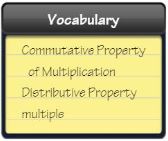
Question 1.
A __________ of 4 is any product that has 4 as one of its factors.
_________
Answer:
Commutative Property of Multiplication
Question 2.
This is an example of the ______________ .
3 × 8 = (3 × 6) + (3 × 2)
This property states that multiplying a sum by a number is the same as multiplying each addend by the number and then adding the products.
__________
Answer:
Distributive Property of Multiplication
Concepts and Skills
Write one way to break apart the array.
Then find the product.
Question 3.
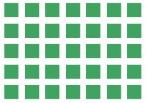
__________
Answer:
7 x 5 = 35
Explanation:
The provided array has 7 columns and 5 rows. Let’s simplify the answer by using Distributive Property. Now, break the array rows to make two smaller arrays with the facts 2 and 3. Now, do 7 x 5. By doing smaller arrays, you can write it as 7 x (2 + 3). Multiply 7 with 2 and 7 with 3. Write (7 x 2) + (7 x 3). Now add them to get the final answer. 14 + 21 = 35.
Question 4.

__________
Answer:
9 x 4 = 36
Explanation:
The given array has 9 columns and 4 rows. Now, do 9 x 4. Using Distributive Property break the array rows to make two smaller arrays with the 4 facts 2 and 2. Now, add 9 x (2 + 2). Multiply 9 with 2 and 9 with 2. Write (9 x 2) + (9 x 2). Now add them to get the final answer. 18 + 18 = 36.
Find the product.
Question 5.
3 × 1 = __________
Answer:
3
Explanation:
Using Commutative Law of Multiplication, Write 3 x 1 = 1 x 3. Multiplication of any number with 1 is the same number. So, 1 x 3 = 3.
Question 6.
5 × 6 = _________
Answer:
30
Explanation:
Skip-count by 5’s 6 times. You can write as 5, 10, 15, 20, 25, 30. The answer for 5 x 6 is 30.
Question 7.
________ = 7 × 7
Answer:
49
Explanation:
Use Distributive Property, to get the answer. Given 7 x 7. Write the facts for 7. 7 = 4 + 3. Now, write 7 x 7 = 7 x (4 + 3). Multiply 7 with 4 and 7 with 3. (7 x 4) + (7 x 3) = 28 + 21 = 49.
Question 8.
2 × 10 = _________
Answer:
20
Explanation:
Double the 10 to get the answer for 2 x 10. So, now write 10 + 10 = 20. The answer for 2 x 10 = 20.
Question 9.
2
× 1
——–
_________
Answer:
2
Explanation:
Add 1 + 1 to get 2 x 1. 1 + 1 = 2. The answer for 2 x 1 = 2.
Question 10.
6
× 6
——–
_________
Answer:
36
Explanation:
Use doubles to get of 6 x 6. First, multiply 3 x 6 = 18. Then, double the value of 3 x 6. 18 + 18 = 36. The answer for 6 x 6 is 36.
Question 11.
8
× 7
——-
__________
Answer:
56
Explanation:
Use Distributive Property to find 8 x 7 = (4 + 4) x 7 = (4 x 7) + (4 x 7) = 28 + 28 = 56 is the correct answer.
Question 12.
6
× 0
——
___________
Answer:
0
Explanation:
Multiplication of any number with 0 is 0. So, the answer for 10 x 0 is 0.
Question 13.
3
× 8
——-
__________
Answer:
24
Explanation:
Skip-count by 3’s 8 times. You can write as 3, 6, 9, 12, 15, 18, 21, 24. The answer for 3 x 8 is 24.
Mid-Chapter Checkpoint Page No 222
Question 14.
Lori saw 6 lightning bugs. They each had 6 legs. How many legs did the lightning bugs have in all?
__________ legs
Answer:
36
Explanation:
Given that Lori saw 6 lightning bugs. Each lightning bugs had 6 legs. To find the total number of legs, do 6 x 6 = 36. The lightning bugs have 36 in all.
Question 15.
Zach walked his dog twice a day, for 7 days. Moira walked her dog three times a day for 5 days. Whose dog was walked more times? How many more?
Type below:
_________
Answer:
Moira’s dog walked more than Zach’s dog. It walked one time more than Zach’s dog.
Explanation:
Zach walked his dog twice a day, for 7 days. So, Zach dog walked 7 x 2 = 14 times in total. Moira walked her dog three times a day for 5 days. Moira dog walked 3 x 5 = 15 days. So, Moira’s dog walked more times than Zach dog. It walked one time more than Zach’s dog.
Question 16.
Annette buys 4 boxes of pencils. There are 8 pencils in each box. Jordan buys 3 boxes of pencils with 10 pencils in each box. Who buys more pencils? How many more?
Type below:
__________
Answer:
Annette has more pencils than Jordan. He has 2 pencils more than Jordan.
Explanation:
Annette buys 4 boxes of pencils. Each box has 8 pencils in it. So, Annette has 4 x 8 = 32 pencils. Jordan buys 3 boxes of pencils with 10 pencils in each box. So, he has 3 x 10 = 30 pencils. Annette has 2 pencils more than Jordan.
Question 17.
Shelly can paint 4 pictures in a day. How many pictures can she paint in 7 days?
_________ pictures
Answer:
28
Explanation:
Shelly can paint 4 pictures in a day. In 7 days, she can paint 7 x 4 = 28 pictures.
Associative Property of Multiplication Page No 227
Write another way to group the factors.
Then find the product.
Question 1.
(3 × 2) × 5
3 × (2 × 5)
30
Answer:
30
Explanation:
Using Associative Property of Multiplication, we can write (3 × 2) × 5 = 3 × (2 × 5).
Find (3 × 2) × 5. Multiply 3 x 2 = 6. Then, multiply 6 x 5 = 30.
Find 3 x (2 x 5). Multiply 2 x 5 = 10. Then, multiply 3 x 10 = 30.
So, (3 × 2) × 5 = 3 × (2 × 5). The product value is 30.
Question 2.
(4 × 3) × 2 =
________
Answer:
(4 × 3) × 2 = 4 x (3 x 2)
24
Explanation:
Use Associative Property of Multiplication to write other group the factors. (4 × 3) × 2 = 4 x (3 x 2). Now, multiply 4 x 3 = 12. Then, multiply 12 x 2 = 24. So, (4 × 3) × 2 = 24.
Question 3.
2 × (2 × 8) =
________
Answer:
2 × (2 × 8) = (2 x 2) x 8
32
Explanation:
With Associative Property of Multiplication, 2 × (2 × 8) = (2 x 2) x 8. Now, multiply 2 x 8 = 16. Then, multiply 16 x 2 = 32. So, 2 × (2 × 8) = 32.
Question 4.
9 × (2 × 1) =
________
Answer:
9 × (2 × 1) = (9 × 2) × 1
18
Explanation:
Using Associative Property of Multiplication, we can write 9 × (2 × 1) = (9 × 2) × 1. Now, multiply 2 x 1 = 2. Then, multiply 2 x 9 = 18. So, 9 × (2 × 1) = 18.
Question 5.
2 × (3 × 6) =
________
Answer:
2 × (3 × 6) = (2 x 3) x 6
36
Explanation:
With the help of Associative Property of Multiplication, we can write 2 × (3 × 6) = (2 x 3) x 6. Now, multiply 2 x 3 = 6. Then, multiply 6 x 6 = 36. So, 2 × (3 × 6) = 36.
Question 6.
(4 × 2) × 5 =
________
Answer:
(4 × 2) × 5 = 4 x (2 x 5)
40
Explanation:
Use Associative Property of Multiplication, to write (4 × 2) × 5 = 4 x (2 x 5). Now, multiply 2 x 5 = 10. Then, multiply 4 x 10 = 40. So, (4 × 2) × 5 = 40.
Use parentheses and multiplication properties.
Then, find the product.
Question 7.
9 × 1 × 5
( 9 × 1 ) × 5 = ________
Answer:
( 9 × 1 ) × 5 = 9 x (1 x 5)
45
Explanation:
Use Associative Property of Multiplication. ( 9 × 1 ) × 5 = 9 x (1 x 5). Now, multiply 9 x 1 = 9. Then, multiply 9 x 5 = 45. So, ( 9 × 1 ) × 5 = 45.
Question 8.
3 × 3 × 2
( 3 × 3 ) × 2 = _________
Answer:
( 3 × 3 ) × 2 =
18
Explanation:
Use Associative Property of Multiplication. ( 3 × 3 ) × 2 = 3 x (3 x 2). Now, multiply 3 x 3 = 9. Then, multiply 9 x 2 = 18. So, ( 3 × 3 ) × 2 = 18.
Question 9.
2 × 4 × 3
( 2 × 4 ) × 3 = _________
Answer:
( 2 × 4 ) × 3 = 2 x (4 x 3)
24
Explanation:
Now use Associative Property of Multiplication. ( 2 × 4 ) × 3 = 2 x (4 x 3). Now, multiply 2 x 4 = 8. Then, multiply 8 x 3 = 24. So, ( 2 × 4 ) × 3 = 24.
Question 10.
5 × 2 × 3
( 5 × 2 ) × 3 = _________
Answer:
( 5 × 2 ) × 3 = 5 x (2 x 3)
30
Explanation:
Use Associative Property of Multiplication. ( 5 × 2 ) × 3 = 5 x (2 x 3). Now, multiply 5 x 2 = 10. Then, multiply 10 x 3 = 30. So, ( 5 × 2 ) × 3 = 30.
Question 11.
7 × 1 × 5
( 7 × 1 ) × 5 = ________
Answer:
( 7 × 1 ) × 5 = 7 x (1 x 5)
35
Explanation:
Use Associative Property of Multiplication. ( 7 × 1 ) × 5 = 7 x (1 x 5). Now, multiply 7 x 1 = 7. Then, multiply 7 x 5 = 35. So, ( 7 × 1 ) × 5 = 35.
Question 12.
8 × 2 × 3
( 8 × 2 ) × 3 = _________
Answer:
( 8 × 2 ) × 3 = 8 x (2 x 3)
48
Explanation:
Use Associative Property of Multiplication. ( 8 × 2 ) × 3 = 8 x (2 x 3). Now, multiply 8 x 2 = 16. Then, multiply 16 x 3 = 48. So, ( 8 × 2 ) × 3 = 48.
Question 13.
7 × 2 × 3
( 7 × 2 ) × 3 = ________
Answer:
( 7 × 2 ) × 3 = 7 x (2 x 3)
42
Explanation:
Use Associative Property of Multiplication. ( 7 × 2 ) × 3 = 7 x (2 x 3). Now, multiply 2 x 3 = 6. Then, multiply 7 x 6 = 42. So, ( 7 × 2 ) × 3 = 42.
Question 14.
4 × 1 × 3
( 4 × 1 ) × 3 = ________
Answer:
12
Explanation:
Use Associative Property of Multiplication. ( 4 × 1 ) × 3 = 4 x (1 x 3). Now, multiply 4 x 1 = 4. Then, multiply 4 x 3 = 12. So, ( 4 × 1 ) × 3 = 12.
Question 15.
10 × 2 × 4
( 10 × 2 ) × 4 = ________
Answer:
80
Explanation:
Use Associative Property of Multiplication. ( 10 × 2 ) × 4 = 10 x (2 x 4). Now, multiply 2 x 4 = 8. Then, multiply 10 x 8 = 80. So, ( 10 × 2 ) × 4 = 80.
Problem Solving
Question 16.
Beth and Maria are going to the county fair. Admission costs $4 per person for each day. They plan to go for 3 days. How much will the girls pay in all?
$ _________
Answer:
$24
Explanation:
From the given information, County fair admission costs $4 per person for each day. To go for 3 days, it costs, 3 x $4 = $12. Beth and Maria are going to the county fair. So, 2 members are going to the county fair. The total amount is 2 X $12 = $24.
Question 17.
Randy’s garden has 3 rows of carrots with 3 plants in each row. Next year he plans to plant 4 times the number of rows of 3 plants. How many plants will he have next year?
_________ plants
Answer:
36
Explanation:
From the given information, Randy’s garden has 3 rows of carrots with 3 plants in each row. So, 3 x 3 = 9. To plant 4 times the number of rows of 3 plants, 9 x 4 = 36. 36 plants will have to plant by Randy’s garden next year.
Associative Property of Multiplication Lesson Check Page No 228
Question 1.
There are 2 benches in each car of a train ride. Two people ride on each bench. If a train has 5 cars, how many people in all can be on a train?
Options:
a. 4
b. 9
c. 10
d. 20
Answer:
d. 20
Explanation:
Given that there are 2 benches in each car of a train ride. If a train has 5 cars in total, the number of benches = 5 x 2 = 10. From the given information, two people ride on each bench. So, 10 x 2 = 20 people will travel on a train if the train has 5 cars.
Question 2.
Crystal has 2 CDs in each box. She has 3 boxes on each of her 6 shelves. How many CDs does Crystal have in all?
Options:
a. 6
b. 12
c. 18
d. 36
Answer:
d. 36
Explanation:
The crystal has 3 boxes on each of her 6 shelves. So, she has 3 x 6 = 18 boxes with her. Each box has 2 CDs in it. So, 2 x 18 = 36 CDs available at crystal.
Spiral Review
Question 3.
Find the sum.
4 7 2
+ 1 8 6
——–
Options:
a. 658
b. 648
c. 558
d. 286
Answer:
30
Explanation:
Add the ones. Add 2 + 6 =8. Then, Add the tens. Regroup hundreds and tens. Add 7 + 8 = 15. Remember to carry over. Add the hundreds. Add 4 + 1 + 1 = 6. Place the one’s, ten’s and hundreds to get the sum. The sum is 658.
Question 4.
Trevor made a picture graph to show how many minutes each student biked last week. This is his key.
Each ![]() = 10 minutes.
= 10 minutes.
What ![]() does stand for?
does stand for?
Options:
a. 2 minutes
b. 10 minutes
c. 20 minutes
d. 25 minutes
Answer:
d. 25 minutes
Explanation:
Given ![]() = 10 minutes. So, half time symbol = 5 minutes. Therefore,
= 10 minutes. So, half time symbol = 5 minutes. Therefore, ![]() = 10 + 10 + 5 = 25 minutes.
= 10 + 10 + 5 = 25 minutes.
Question 5.
Madison has 142 stickers in her collection. What is 142 rounded to the nearest ten?
Options:
a. 40
b. 140
c. 150
d. 200
Answer:
b. 140
Explanation:
The 142 lies between 140 and 150. But the 142 is closer to 140 than it is to 150. So, 142 is rounded to the 140.
Question 6.
There are 5 pages of photos. Each page has 6 photos. How many photos are there in all?
Options:
a. 12
b. 20
c. 24
d. 30
Answer:
d. 30
Explanation:
Given that there are 5 pages of photos. And, each page has 6 photos. Total photos = 5 x 6 = 30.
Patterns on the Multiplication Table Page No 233
Is the product even or odd? Write even or odd.
Question 1.
2 × 7 = even
Think: Products with 2 as a factor are even.
Answer:
even
Explanation:
Products with 2 as a factor are even.
Question 2.
4 × 6 = ________
Answer:
even
Explanation:
The numbers end with 0, 2, 4, 6, 8 are even numbers. So, 24 is even number. The 4 × 6 an even number.
Question 3.
8 × 3 = ________
Answer:
even
Explanation:
8 is an even number. 3 is an odd number. The product of an odd number and an even number is even. The answer is even.
Question 4.
2 × 3 = _________
Answer:
even
Explanation:
Products with 2 as a factor are even.
Question 5.
9 × 9 = ________
Answer:
odd
Explanation:
9 is an odd number. The product of two odd numbers is an odd number. The answer is odd.
Question 6.
5 × 7 = _________
Answer:
odd
Explanation:
The numbers end with 1,3, 5, 7, 9 are odd numbers. So, 35 is an odd number. The 5 × 7 an odd number.
Question 7.
6 × 3 = ________
Answer:
even
Explanation:
6 is an even number. 3 is an odd number. The product of an odd number and an even number is even. The answer is even.
Use the multiplication table. Describe a pattern you see.
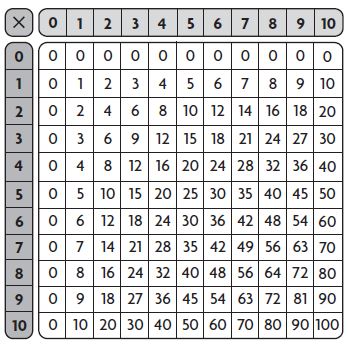
Question 8.
in the column for 5
_________
Answer:
The one’s digits repeat 0 and 5. Each number is 5 more than the number above it.
Explanation:
Each number is added with 5. One’s digit is repeated with 0 and 5.
Question 9.
in the row for 10
________
Answer:
Add 10. All the products are even. The one’s digit is always 0.
Explanation:
All the products are even. Also, the one’s digit is always 0. Add 10 for every product to get the next number to it.
Question 10.
in the rows for 3 and 6
Type below:
_________
Answer:
The products of 6 are the products of 3 doubled.
Explanation:
Add 3 for row 3. The products of 6 are the products of 3 doubled.
Question 11.
Carl shades a row in the multiplication table. The products in the row are all even. The ones digits in the products repeat 0, 4, 8, 2, 6. What row does Carl shade?
Carl shaded row for _________
Answer:
The row for 4.
Explanation:
From the given data, the answer is row 4.
Question 12.
Jenna says that no row or column contains products with only odd numbers. Do you agree? Explain.
_________
Answer:
Yes, Either the products are all even, or there is an even and odd number pattern.
Explanation:
Jenna said correctly. Either the products are all even, or there is an even and odd number pattern.
Patterns on the Multiplication Table Lesson Check Page No 234
Question 1.
Which has an even product?
Options:
a. 1 × 9
b. 3 × 3
c. 5 × 7
d. 4 × 9
Answer:
d. 4 × 9
Explanation:
The product of an odd number and an even number is even. The answer is 4 × 9.
Question 2.
Which describes this pattern?
10, 15, 20, 25, 30
Options:
a. Even and then odd
b. Add 10.
c. Subtract 5.
d. Multiply by 5.
Answer:
a. Even and then odd
Explanation:
The given pattern is the combination of even and add.
Spiral Review
Question 3.
Lexi has 2 cans of tennis balls. There are 3 tennis balls in each can. She buys 2 more cans. How many tennis balls does she now have in all?
Options:
a. 12
b. 9
c. 7
d. 6
Answer:
a. 12
Explanation:
Lexi has 2 cans of tennis balls. There are 3 tennis balls in each can. So, she has 2 x 3 = 6 balls. She buys 2 more cans. So, again 2 cans with 3 tennis balls = 2 x 3 =6. Total = 6 + 6 = 12. 12 tennis balls she is going to have with her.
Question 4.
Use the picture graph.
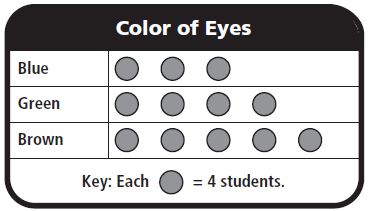
How many students have green eyes?
Options:
a. 4
b. 8
c. 12
d. 16
Answer:
d. 16
Explanation:
From the given picture, Green eyes have 4 circles. Each circle =4. 4 x 4 = 16. 16 students have green eyes.
Question 5.
Sasha bought 3 boxes of pencils. If each box has 6 pencils, how many pencils did Sasha buy in all?
Options:
a. 9
b. 12
c. 18
d. 24
Answer:
b. 12
Explanation:
Sasha bought 3 boxes of pencils. If each box has 6 pencils, 3 x 6 = 12 pencils Sasha can buy in all.
Question 6.
Find the sum.
2 1 9
+ 7 6 3
———–
Options:
a. 992
b. 982
c. 976
d. 972
Answer:
b. 982
Explanation:
Break apart the addends from the given values. Start with the hundreds. Then, add each place value.
Let’s write 219 as 200+10+9 and 763 as 700+60+3.
Sum up the above two values. Then you get 900+70+12. Add the ones and then add the 10’s and 100’s. The final answer is 982.
Multiply with 8 Page No 239
Find the product.
Question 1.
8 × 10 = 80
Answer:
80
Explanation:
8 × 10 = (2 x 4) x 10
Use the Associative Property.
8 × 10 = 2 x (4 x 10)
Multiply. 4 × 10
8 × 10 = 2 x 40
Double the product.
8 × 10 = 40 + 40
8 × 10 = 80
Question 2.
8 × 8 = ________
Answer:
64
Explanation:
Factor 8 is an even number. 4+ 4
8 x 4 = 32.
32 doubled is 64.
8 x 8 = 64.
Question 3.
8 × 5 = ________
Answer:
40
Explanation:
8 × 5 = (2 x 4) x 5
Use the Associative Property.
8 × 5 = 2 x (4 x 5)
Multiply. 4 × 5
8 × 5 = 2 x 20
Double the product.
8 × 5 = 20 + 20
8 × 5 = 40
Question 4.
3 × 8 = ________
Answer:
24
Explanation:
Factor 8 is an even number. 4+ 4
3 x 4 = 12.
12 doubled is 24.
3 x 8 = 24.
Question 5.
_______ = 4 × 8
Answer:
32
Explanation:
Factor 8 is an even number. 4+ 4
4 x 4 = 16.
16 doubled is 32.
4 x 8 = 32.
Question 6.
8 × 7 = ________
Answer:
56
Explanation:
8 × 7 = (2 x 4) x 7
Use the Associative Property.
8 × 7 = 2 x (4 x 7)
Multiply. 4 × 7
8 × 7 = 2 x 28
Double the product.
8 × 7 = 28 + 28
8 × 7 = 56.
Question 7.
6 × 8 = ________
Answer:
48
Explanation:
Factor 8 is an even number. 4+ 4
6 x 4 = 24.
24 doubled is 48.
6 x 8 = 48.
Question 8.
_______ = 9 × 8
Answer:
72
Explanation:
Factor 8 is an even number. 4+ 4
9 x 4 = 36.
36 doubled is 72.
9 x 8 = 72.
Question 9.
8
× 2
——
________
Answer:
16
Explanation:
Using the Commutative Law of Multiplication, 2 x 8 = 8 x 2.
Factor 8 is an even number. 4+ 4
2 x 4 = 8.
8 doubled is 16.
2 x 8 = 16.
So, 8 x 2 =16.
Question 10.
6
× 8
——-
________
Answer:
48
Explanation:
Factor 8 is an even number. 4+ 4
6 x 4 = 24.
24 doubled is 48.
6 x 8 = 48.
Question 11.
8
× 7
——
_________
Answer:
56
Explanation:
Using the Commutative Law of Multiplication, 8 x 7 = 7 x 8.
Factor 8 is an even number. 4+ 4
7 x 4 = 28.
28 doubled is 56.
7 x 8 = 56.
Question 12.
0
× 8
——-
____________
Answer:
0
Explanation:
Multiplication of any number with 0 is 0. So, the answer for 0 x 8 is 0.
Question 13.
8
× 5
——
___________
Answer:
40
Explanation:
8 × 5 = (2 x 4) x 5
Use the Associative Property.
8 × 5 = 2 x (4 x 5)
Multiply. 4 × 5
8 × 5 = 2 x 20
Double the product.
8 × 5 = 20 + 20
8 × 5 = 40.
Question 14.
8
× 8
——–
___________
Answer:
64
Explanation:
Factor 8 is an even number. 4+ 4
8 x 4 = 32.
32 doubled is 64.
8 x 8 = 64.
Question 15.
9
× 8
——-
___________
Answer:
72
Explanation:
Factor 8 is an even number. 4+ 4
9 x 4 = 36.
36 doubled is 72.
9 x 8 = 72.
Question 16.
8
× 3
——
___________
Answer:
24
Explanation:
8 × 3 = (2 x 4) x 3
Use the Associative Property.
8 × 3 = 2 x (4 x 3)
Multiply. 4 × 3
8 × 3 = 2 x 12
Double the product.
8 × 3 = 12 + 12
8 × 3 = 24.
Question 17.
8
× 1
——
___________
Answer:
8
Explanation:
Multiplication of any number with 1 is the same number. So, 1 x 8 = 8.
Question 18.
4
× 8
——
___________
Answer:
32
Explanation:
Factor 8 is an even number. 4+ 4
4 x 4 = 16.
16 doubled is 32.
4 x 8 = 32.
Problem Solving
Question 19.
There are 6 teams in the basketball league. Each team has 8 players. How many players are there in all?
____________ players
Answer:
48
Explanation:
Multiply 6 x 8 to get the total number of players. 6 x 8 = 48 players are in the basketball league.
Question 20.
Lynn has 4 stacks of quarters. There are 8 quarters in each stack. How many quarters does Lynn have in all?
___________ quarters
Answer:
32
Explanation:
Multiply 4 x 8 to find quarters in stacks. Lynn has 4 x 8 = 32 quarters in total.
Question 21.
Tomas is packing 7 baskets for a fair. He is placing 8 apples in each basket. How many apples are there in all?
___________ apples
Answer:
56
Explanation:
Multiply 7 x 8 to get the total number of apples. Tomas have 7 x 8 = 56 apples.
Question 22.
There are 10 pencils in each box. If Jenna buys 8 boxes, how many pencils will she buy?
_____________ pencils
Answer:
80
Explanation:
To get total pencils, if Jenna buys 8 boxes, multiply 10 x 8. So, Jenna buys 10 x 8 = 80 pencils.
Multiply with 8 Lesson Check Page No 240
Question 1.
Find the product.
5 × 8 = ■
Options:
a. 30
b. 32
c. 42
d. 40
Answer:
d. 40
Explanation:
Using Commutative Property of Multiplication, write 5 x 8 = 8 x 5
8 × 5 = (2 x 4) x 5
Use the Associative Property.
8 × 5 = 2 x (4 x 5)
Multiply. 4 × 5
8 × 5 = 2 x 20
Double the product.
8 × 5 = 20 + 20
8 × 5 = 40
Question 2.
There are 7 tarantulas in the spider exhibit at the zoo. Each tarantula has 8 legs. How many legs do the 7 tarantulas have in all?
Options:
a. 15
b. 49
c. 56
d. 63
Answer:
c. 56
Explanation:
Multiply 7 x 8 to find the 7 tarantulas legs. 7 tarantulas have 7 x 8 = 56 legs.
Spiral Review
Question 3.
Find the difference.
6 5 2
– 9 9
———
Options:
a. 99
b. 552
c. 553
d. 653
Answer:
c. 553
Explanation:
Subtract the ones. 2<9. so regroup 5 tens 2 ones = 4 tens 3 ones. Now, do 12 – 9 = 3. Then, Subtract the tens. 4 < 9. So, regroup 6 hundred 5 tens = 5 hundred 5 tens. 14 – 9 = 5. Subtract the hundreds and add them to check the answer. 5 – 0 = 5. The final answer is 553.
Question 4.
The school library received an order of 232 new books. What is 232 rounded to the nearest ten?
Options:
a. 200
b. 230
c. 240
d. 300
Answer:
b. 230
Explanation:
The 232 lies between 230 and 240. But the 232 is closer to 230 than it is to 240. So, 232 is rounded to the 230.
Question 5.
Sam’s picture graph shows that 8 students chose pizza as their favorite lunch. This is the key for the graph.
Each ☺ smile = 2 students.
How many ☺ smile should be next to pizza on Sam’s graph?
Options:
a. 2
b. 4
c. 6
d. 8
Answer:
b. 4
Explanation:
Given 1 smile = 2 students.
2 smiles = 4 students
3 smiles = 6 students
4 smiles = 8 students
4 smiles required for Sam for her next pizza on the graph.
Question 6.
Tashia buys 5 packages of oranges. Each package has 4 oranges. How many oranges in all does Tashia buy?
Options:
a. 1
b. 9
c. 20
d. 25
Answer:
d. 25
Explanation:
To know the total number of oranges, multiply 5 x 5. Tashia buys 5 x 5 = 25 oranges.
Multiply with 9 Page No 245
Find the product.
Question 1.
10 × 9 = 90
Answer:
90
Explanation:
The tens digit is 1 less than the factor that is multiplied by 9. So, ten’s digit number is 10 – 1 = 9. The sum of the digits in the product is always 9. So, to multiply 10 × 9, think the tens digit is 9 and the one’s digit is 0. The product is 90.
Question 2.
2 × 9 = ________
Answer:
18
Explanation:
9 = 3 + 6
2 × 9 = 2 x (3 + 6)
Multiply each addend by 2.
2 × 9 = (2 × 3) + (2 × 6)
Add the products.
2 × 9 = 6 + 12
2 × 9 = 18.
Question 3.
9 × 4 = ________
Answer:
36
Explanation:
9 = 3 + 6
9 × 4 = (3 + 6) x 4
Multiply each addend by 4.
9 × 4 = (3 x 4) + (6 x 4)
Add the products.
9 × 4 = 12 + 24
9 × 4 = 36.
Question 4.
0 × 9 = ________
Answer:
0
Explanation:
Multiplication of any number with 0 is 0. So, the answer for 0 x 9 is 0.
Question 5.
1 × 9 = ________
Answer:
9
Explanation:
Multiplication of any number with 1 is the same number. So, 1 x 9 = 9.
Question 6.
8 × 9 = ________
Answer:
72
Explanation:
9 = 3 + 6
8 × 9 = 8 x (3 + 6)
Multiply each addend by 8.
8 × 9 = (8 × 3) + (8 × 6)
Add the products.
8 × 9 = 24 + 48
8 × 9 = 72.
Question 7.
9 × 5 = ________
Answer:
45
Explanation:
9 = 3 + 6
9 × 5 = (3 + 6) x 5
Multiply each addend by 5.
9 × 5 = (3 x 5) + (6 x 5)
Add the products.
9 × 5 = 15 + 30
9 × 5 = 45.
Question 8.
6 × 9 = ________
Answer:
54
Explanation:
9 = 3 + 6
6 × 9 = 6 x (3 + 6)
Multiply each addend by 6.
6 × 9 = (6 × 3) + (6 × 6)
Add the products.
6 × 9 = 18 + 36
6 × 9 = 54.
Question 9.
9
× 4
——–
________
Answer:
36
Explanation:
9 = 3 + 6
9 × 4 = (3 + 6) x 4
Multiply each addend by 4.
9 × 4 = (3 x 4) + (6 x 4)
Add the products.
9 × 4 = 12 + 24
9 × 4 = 36.
Question 10.
5
× 9
——–
________
Answer:
45
Explanation:
9 = 3 + 6
5 × 9 = 5 x (3 + 6)
Multiply each addend by 5.
5 × 9 = (5 × 3) + (5 × 6)
Add the products.
5 × 9 = 15 + 30
5 × 9 = 45.
Question 11.
9
× 7
——–
________
Answer:
63
Explanation:
9 = 3 + 6
9 × 7 = (3 + 6) x 7
Multiply each addend by 7.
9 × 7 = (3 x 7) + (6 x 7)
Add the products.
9 × 7 = 21 + 42
9 × 7 = 63.
Question 12.
2
× 9
——–
________
Answer:
18
Explanation:
9 = 3 + 6
2 × 9 = 2 x (3 + 6)
Multiply each addend by 2.
2 × 9 = (2 × 3) + (2 × 6)
Add the products.
2 × 9 = 6 + 12
2 × 9 = 18.
Question 13.
9
× 9
——–
________
Answer:
81
Explanation:
The tens digit is 1 less than the factor that is multiplied by 9. So, ten’s digit number is 9 – 1 = 8. The sum of the digits in the product is always 9. So, add 1 to 8 to get one’s digit 1 + 8 = 9. The product is 81.
Question 14.
10
× 9
——–
________
Answer:
90
Explanation:
The tens digit is 1 less than the factor that is multiplied by 9. So, ten’s digit number is 10 – 1 = 9. The sum of the digits in the product is always 9. So, to multiply 10 × 9, think the tens digit is 9 and the one’s digit is 0. The product is 90.
Question 15.
3
× 9
——–
________
Answer:
27
Explanation:
9 = 3 + 6
3 × 9 = 3 x (3 + 6)
Multiply each addend by 3.
3 × 9 = (3 × 3) + (3 × 6)
Add the products.
3 × 9 = 9 + 18
3 × 9 = 27.
Question 16.
9
× 8
——–
________
Answer:
72
Explanation:
9 = 3 + 6
8 × 9 = 8 x (3 + 6)
Multiply each addend by 8.
8 × 9 = (8 × 3) + (8 × 6)
Add the products.
8 × 9 = 24 + 48
8 × 9 = 72.
Question 17.
6
× 9
——–
________
Answer:
54
Explanation:
9 = 3 + 6
6 × 9 = 6 x (3 + 6)
Multiply each addend by 6.
6 × 9 = (6 × 3) + (6 × 6)
Add the products.
6 × 9 = 18 + 36
6 × 9 = 54.
Question 18.
9
× 1
——–
________
Answer:
9
Explanation:
Multiplication of any number with 1 is the same number. So, 1 x 9 = 9.
Problem Solving
Question 19.
There are 9 positions on the softball team. Three people are trying out for each position. How many people in all are trying out?
___________ people
Answer:
27
Explanation:
To find the total number of people trying for a position on the softball team, multiply 9 x 3. 9 x 3 = 27 people are trying for a softball team position.
Question 20.
Carlos bought a book for $9. Now he would like to buy 4 other books for the same price. How much will he have to pay in all for the other 4 books?
$ _____________
Answer:
$36
Explanation:
Carlos bought a book for $9. Now he would like to buy 4 other books for the same price. So, to get them all 4 books, he needs to pay 4 x $9 = $36.
Multiply with 9 Lesson Check Page No 246
Question 1.
Find the product.
7 × 9 = ■
Options:
a. 63
b. 56
c. 45
d. 36
Answer:
a. 63
Explanation:
9 = 3 + 6
9 × 7 = (3 + 6) x 7
Multiply each addend by 7.
9 × 7 = (3 x 7) + (6 x 7)
Add the products.
9 × 7 = 21 + 42
9 × 7 = 63.
Question 2.
Clare buys 5 tickets for the high school musical. Each ticket costs $9. How much do the tickets cost in all?
Options:
a. $36
b. $40
c. $45
d. $52
Answer:
c. $45
Explanation:
Multiply 5 with $9 to get the total number of tickets. Clare buys 5 tickets for 5 x $9 = $45.
Spiral Review
Question 3.
The table shows the hair color of girls in Kim’s class. How many girls have brown hair?
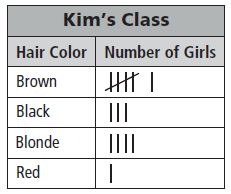
Options:
a. 1
b. 3
c. 4
d. 6
Answer:
d. 6
Explanation:
From the given figure, there are 6 bars available in the Number of Girls for Brown. So, the answer is 6.
Question 4.
Miles picked up 9 shirts from the dry cleaners. It costs $4 to clean each shirt. How much did Miles spend to have all the shirts cleaned?
Options:
a. $13
b. $22
c. $36
d. $45
Answer:
c. $36
Explanation:
Miles spend 9 x $4 = $36 to have all the shirts cleaned.
Question 5.
In a picture graph, each picture of a baseball is equal to 5 games won by a team. The row for the Falcons has 7 baseballs. How many games have the Falcons won?
Options:
a. 40
b. 35
c. 12
d. 7
Answer:
a. 63
Explanation:
From given data, 1 baseball = 5 games. The row for the Falcons has 7 baseballs. So, Falcons won 7 x 5 = 35 games.
Question 6.
An array has 8 rows with 4 circles in each row. How many circles are in the array?
Options:
a. 12
b. 24
c. 32
d. 36
Answer:
a. 63
Explanation:
8 x 4 = 32 circles are in the array.
Multiplication Page No 251
Solve.
Question 1.
Henry has a new album for his baseball cards. He uses pages that hold 6 cards and pages that hold 3 cards. If Henry has 36 cards, how many different ways can he put them in his album?
Henry can put the cards in his album 5 ways.
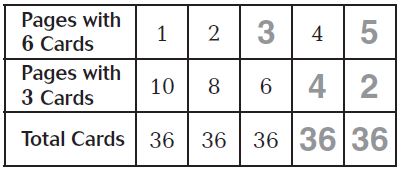
Answer:
5 ways
Explanation:
Henry can put the cards in 5 ways. They are
1. (1 x 6 cards pages) x (10 x 3 cards pages) = 6 cards + 30 cards = 36 cards.
2. (2 x 6 cards pages) x (8 x 3 cards pages) = 12 cards + 24 cards = 36 cards.
3. (3 x 6 cards pages) x (6 x 3 cards pages) = 18 cards + 18 cards = 36 cards.
4. (4 x 6 cards pages) x (4 x 3 cards pages) = 24 cards + 12 cards = 36 cards.
5. (5 x 6 cards pages) x (2 x 3 cards pages) = 30 cards + 6 cards = 36 cards.
Question 2.
Ms. Hernandez has 17 tomato plants that she wants to plant in rows. She will put 2 plants in some rows and 1 plant in the others. How many different ways can she plant the tomato plants? Make a table to solve.
| Rows With 2 Plants | ___8__ | ___7___ | ____6__ | ___5___ | __4____ | ____3__ | _____2_ | _____1_ |
| Rows With 1 Plants | ____1__ | ___3___ | ___5___ | ___7___ | ___9___ | ____11__ | ___13___ | ____15__ |
| Total Plants | ____17__ | ___17___ | __17____ | __17____ | ___17___ | ___17___ | ____17__ | ____17__ |
| Ms. Hernandez can plant the tomato plants | ___8___ | Ways. | ||||||
Answer:
8 ways
Explanation:
Ms. Hernandez wants to grow 2 tomoto plants in one row and 1 in other row. The total number of plants should be 17. So,
1. (8 rows x 2 plants) x (1 row x 1plant) = 16 plants + 1 plant = 17 plants.
2. (7 rows x 2 plants) x (3 rows x 1plant) = 14 plants + 3 plant = 17 plantst.
3. (6 rows x 2 plants) x (5 rows x 1plant) = 12 plants + 5 plant = 17 plants.
4. (5 rows x 2 plants) x (7 rows x 1plant) = 10 plants + 7 plant = 17 plants.
5. (4 rows x 2 plants) x (9 rows x 1plant) = 8 plants + 9 plant = 17 plants.
6. (3 rows x 2 plants) x (11 rows x 1plant) = 6 plants + 11 plant = 17 plants.
7. (2 rows x 2 plants) x (13 rows x 1plant) = 4 plants + 13 plant = 17 plants.
8. (1 rows x 2 plants) x (15 rows x 1plant) = 2 plants + 15 plant = 17 plants.
Question 3.
Bianca has a total of 25¢. She has some nickels and pennies. How many different combinations of nickels and pennies could Bianca have? Make a table to solve.
| Number of Nickels | ___1___ | ___2___ | ____3__ | ____4__ |
| Number of Pennies | ___20___ | ___15___ | ___10___ | ____5__ |
| Total Value | ___25¢___ | ___25¢___ | ___25¢___ | ___25¢___ |
| Bianca could have | ___4___ | Combination of 25 ¢. | ||
Answer:
4 ways
Explanation:
1 Nickel = 5 pennies.
Bianca can have combinations of nickels and pennies to get 25¢ are
1. 1 Nickel + 20 Pennies = 5 Pennies + 20 Pennies = 25 Pennies = 25¢
2. 2 Nickels + 15 Pennies = 10 Pennies + 15 Pennies = 25 Pennies = 25¢
3. 3 Nickels + 10 Pennies = 15 Pennies + 10 Pennies = 25 Pennies = 25¢
4. 4 Nickels + 5 Pennies = 20 Pennies + 5 Pennies = 25 Pennies = 25¢
Multiplication Lesson Check Page No 252
Question 1.
The table shows different ways that Cameron can display his 12 model cars on shelves. How many shelves will display 2 cars if 8 of the shelves each display 1 car?
Options:
a. 1
b. 2
c. 3
d. 4
Question 1.

Answer:
b. 2
Explanation:
1. (Shelves with 1 car x 2) + (Shelves with 2 cars x 5) = 2 Cars + 10 Cars = 12 Cars
2. (Shelves with 1 car x 4) + (Shelves with 2 cars x 4) = 4 Cars + 8 Cars = 12 Cars
3. (Shelves with 1 car x 6) + (Shelves with 2 cars x 3) = 6 Cars + 6 Cars = 12 Cars
4. (Shelves with 1 car x 8) + (Shelves with 2 cars x 2) = 8 Cars + 4 Cars = 12 Cars
5. (Shelves with 1 car x 10) + (Shelves with 2 cars x 1) = 10 Cars + 2 Cars = 12 Cars
Therefore, 2 shelves will display 2 cars if 8 of the shelves each display 1 car.
Spiral Review
Question 2.
Find the sum.
3 1 7
+ 1 5 1
——–
Options:
a. 166
b. 268
c. 468
d. 568
Answer:
c. 468
Explanation:
Add the ones. Add 7 + 1 =8. Then, Add the tens. Add 1 + 5 = 6. Add the hundreds. Add 3 + 1 = 4. Place the one’s, ten’s and hundreds to get the sum. The sum is 468.
Question 3.
The school cafeteria has an order for 238 hot lunches. What is 238 rounded to the nearest ten?
Options:
a. 300
b. 240
c. 230
d. 200
Answer:
b. 240
Explanation:
The 238 lies between 230 and 240. But the 238 is closer to 240 than it is to 230. So, 238 is rounded to the 240.
Question 4.
Tyler made a picture graph to show students’ favorite colors. This is the key for his graph.
Each ![]() = 3 votes.
= 3 votes.
If 12 students voted for green, how many ![]() should there be in the green row of the graph?
should there be in the green row of the graph?
Options:
a. 3
b. 4
c. 9
d. 12
Answer:
b. 4
Explanation:
Each circle = 3 votes. If 12 students voted for green, total votes = 12. Write 12 = 3 + 3 + 3 +3. So, 4 circles represent 12 votes.
Question 5.
There are 5 bikes in each bike rack at the school. There are 6 bike racks. How many bikes in all are in the bike racks?
Options:
a. 11
b. 24
c. 25
d. 30
Answer:
d. 30
Explanation:
To find the total bikes in the bike rack at the school, multiply 5 bikes x 6 bike racks. 5 x 6 = 30 bikes are available in bike racks.
Review/Test Page No 253
Question 1.
Mrs. Ruiz sorted spools of thread into 4 boxes. Each box holds 5 spools. How many spools of thread does Mrs. Ruiz have? Draw circles to model the problem. Then solve.
________ spools
Answer:
20 spools
Explanation:
4 boxes of spools x 5 spools = 20 spools. Mrs. Ruiz has 20 spools of thread.
Question 2.
For numbers 2a–2d, select True or False for each multiplication sentence.
a. 2 × 8 = 16
i. True
ii. False
Answer:
i. True
Explanation:
Double 8.
8 + 8 = 16.
So, 2 x 8 = 16.
Question 2.
b. 5 × 8 = 40
i. True
ii. False
Answer:
i. True
Explanation:
Skip-count by 5’s 8 times. Write like 5, 10, 15, 20, 25, 30, 35, 40. So, the answer for 5 x 8 is 40.
Question 2.
c. 6 × 8 = 56
i. True
ii. False
Answer:
ii. False
Explanation:
Use doubles to find the answer of 6 x 8. Firstly, multiply 3 x 8 = 24. Then, double the value of 3 x 8. 24 + 24 = 48. The answer for 6 x 8 is 48. So, 6 × 8 = 56 is false.
Question 2.
d. 8 × 8 = 64
i. True
ii. False
Answer:
i. True
Explanation:
Factor 8 is an even number. 4+ 4
8 x 4 = 32.
32 doubled is 64.
8 x 8 = 64.
Question 3.
Bella is planning to write in a journal. Some pages will have one journal entry on them, and other pages will have two journal entries on them. If Bella wants to make 10 entries, how many different ways can she write them in her journal?
________ different ways
Answer:
4 ways
Explanation:
1. (1 journal entry x 2) + (2 journal entries x 4) = 2 journals + 8 journals = 10 journals.
2. (1 journal entry x 4) + (2 journal entries x 3) = 4 journals + 6 journals = 10 journals.
3. (1 journal entry x 6) + (2 journal entries x 2) = 6 journals + 4 journals = 10 journals.
4. (1 journal entry x 8) + (2 journal entries x 1) = 8 journals + 2 journals = 10 journals.
Bella can use 4 ways to write journals.
Question 4.
There are 7 days in 1 week. How many days are there in 4 weeks?
_______ days
Answer:
28 days
Explanation:
1 week = 1 x 7 = 7 days.
4 weeks = 4 x 7 = 28 days.
Review/Test Page No 254
Question 5.
Circle groups to show 3 × (2 × 3).

Type below:
__________
Answer:
18
Explanation:
3 × (2 × 3) = 3 x 6 = 18.
Question 6.
Dale keeps all of his pairs of shoes in his closet. Select the number of shoes that Dale could have in his closet. Mark all that apply.
Options:
a. 3
b. 4
c. 6
d. 7
e. 8
Answer:
b. 4
c. 6
e. 8
Explanation:
Pair of shoes have 2 in number. So, the possible ways are always even. Dale could have 4, 6, 8 in his closet.
Question 7.
Lisa completed the table to describe the product of a mystery one-digit factor and each number.

Part A
Give all of the possible numbers that could be Lisa’s mystery one-digit factor.
Type below:
__________
Answer:
0, 2, 4, 6, 8
Question 7.
Part B
Explain how you know that you have selected all of the correct possibilities.
Type below:
__________
Answer:
Given that the product numbers are even. The product of an even number with another number is even. So, we should take the mystery factor as an even number.
Review/Test Page No 255
Question 8.
Kate drew 7 octagons. An octagon has 8 sides. How many sides did Kate draw?

_________ sides
Answer:
56
Explanation:
Kate drew 7 octagons. An octagon has 8 sides. Kate draw 8 x 7 = 56 sides.
Question 9.
José buys 6 bags of flour. Each bag weighs 5 pounds. How many pounds of flour did José buy?
_________ pounds
Answer:
30 pounds
Explanation:
6 x 5 = 30. José spends 30 pounds to buy flours.
Question 10.
Break apart the array to show 8 × 6 = (4 × 6) + (4 × 6).
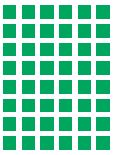
Answer:
Explanation:
Break the array of 4 columns and 6 rows to get the answer.
Question 11.
Circle the symbol that makes the multiplication sentence true.
9 × 6 3 × (3 × 9)
3 × (3 × 9)
_________
Answer:
<
Explanation:
9 x 6 = 54
3 x 27 = 81
54 < 81.
So, 9 x 6 < 3 x (3 x 9)
Question 12.
Roberto wants to make $2.00 using dollars, half dollar, and quarters. How many different ways can he make $2.00?
__________ different ways
Answer:
18
Explanation:
0.25 – 8 |6 |4 |4 |2 |2 |0 |0 |0
0.50 – 0 |1 |2 |0 |3 |1 |2 |4 |0
1 -0 |0 |0 |1 |0 |1 |1 |0 |2
Review/Test Page No 256
Question 13.
A carpenter builds stools that have 3 legs each. How many legs does the carpenter use to build 5 stools? Use the array to explain how you know your answer is correct.
_________ legs
Answer:
15 legs
Explanation:
Each stool has 3 legs. To build 5 stools, 5 x 3 = 15 legs. 15 legs need to build 5 stools.
Question 14.
Etta buys some ribbon and cuts it into 7 pieces that are the same length. Each piece is 9 inches long. How long was the ribbon that Etta bought?
_________ inches
Answer:
63 inches
Explanation:
The length of the ribbon is 7 x 9 inches = 63 inches.
Question 15.
Antoine and 3 friends divide some pennies evenly among themselves. Each friend separates his pennies into 3 equal stacks with 5 pennies in each stack.
Write a multiplication sentence that shows the total number of pennies.
Type below:
_________
Answer:
4 x (5 x 3)
Explanation:
5 pennies into 3 equal stacks = 5 x 3 = 15.
15 stacks shared between 4 friends = 4 x 15 = 4 x (5 x 3).
Question 16.
Luke is making 4 first-aid kits. He wants to put 3 large and 4 small bandages in each kit. How many bandages does he need for the kits? Show your work.
_________ bandages
Answer:
28 bandages
Explanation:
Luke wants to put 3 large and 4 small bandages in each kit. So, total = 3 + 4 = 7 bandages.
He is making 4 first-aid kits. So, 4 x 7 bandages = 28 bandages.
Review/Test Page No 257
Question 17.
For numbers 17a–17d, select True or False for each equation.
a. 3 × 7 = 21
i. True
ii. False
Answer:
i. True
Explanation:
Skip count by 3’s until you say 7 numbers. 3, 6, 9, 12, 15, 18, 21. So, the answer for 3 x 7 is 21. The answer is true.
Question 17.
b. 5 × 7 = 28
i. True
ii. False
Answer:
ii. False
Explanation:
Skip count by 5’s until you say 7 numbers. 5, 10, 15, 20, 25, 30, 35. Now, the count of the number is 7. So, the answer for 5 x 7 is 35. The answer is False.
Question 17.
c. 8 × 7 = 49
i. True
ii. False
Answer:
ii. False
Explanation:
Use Distributive Property to find 8 x 7 = (4 + 4) x 7 = (4 x 7) + (4 x 7) = 28 + 28 = 56 is the correct answer. The answer is False.
Question 17.
d. 9 × 7 = 63
i. True
ii. False
Answer:
i. True
Explanation:
9 = 3 + 6
9 × 7 = (3 + 6) x 7
Multiply each addend by 7.
9 × 7 = (3 x 7) + (6 x 7)
Add the products.
9 × 7 = 21 + 42
9 × 7 = 63.
The answer is true.
Question 18.
Circle the number that makes the multiplication sentence true.
10 ×  = 40
= 40
Answer:
4
Explanation:
The value of 10 x4 = 40. So, the answer is 4.
Question 19.
For numbers 19a–19d, select Yes or No to indicate whether the number sentence has the same value as 8 × 6.
a. 8 + (4 × 2) = ■
i. yes
ii. no
Answer:
ii. no
Explanation:
8 x 6 = 48.
8 + (4 x 2) = 8 + 8 =16. The answer is no.
Question 19.
b. (8 × 4) + (8 × 2) = ■
i. yes
ii. no
Answer:
i. yes
Explanation:
8 x 6 = 48.
(8 x 4) + (8 x 2) = 32 + 16 = 48. The answer is yes.
Question 19.
c. (6 × 4) + (6 × 2) = ■
i. yes
ii. no
Answer:
ii. no
Explanation:
8 x 6 = 48.
(6 × 4) + (6 × 2) = 24 + 12 = 36. The answer is no.
Question 19.
d. 6 × (4 + 4) = ■
i. yes
ii. no
Answer:
i. yes
Explanation:
8 x 6 = 48.
6 × (4 + 4) = 6 x 8 = 48. The answer is yes.
Question 20.
Chloe bought 4 movie tickets. Each ticket cost $6. What was the total cost of the movie tickets?
$ _________
Answer:
$24
Explanation:
The total cost of the movie tickets = 4 x $6 = $24.
Question 21.
Write a multiplication sentence using the following numbers and symbols.

Type below:
__________
Answer:
6 x (5 x 2) = 60
Explanation:
We can write as 6 x (5 x 2) = 60.
Review/Test Page No 258
Question 22.
Louis started a table showing a multiplication pattern.
Part A
Complete the table. Describe a pattern you see in the products.

Type below:
__________
Answer:
12, 15, 18, 21, 24, 27, 30. Add 3 to the product to get the next product.
Explanation:
Add 3 to the product to get the next product.
9+3 = 12.
12 + 3 = 15.
15 + 3 = 18.
18 + 3 = 21.
21 + 3 = 24.
24 + 3 = 27.
27 + 3 = 30.
Question 22.
Part B
If you multiplied 3 × 37, would the product be an even number or an odd number? Use the table to explain your reasoning.
__________
Answer:
When an even number is multiplied by 3 (an odd number), the product is even. When an odd number is multiplied by 3, the product is odd, so the product of 3 × 37 would be odd.
Question 23.
Use the number line to show the product of 4 × 8.
![]()
4 × 8 = _______
Answer:
32
Explanation:
Skip 2 numbers to get the product of 4 multiples. If you skip 2 numbers until you count 8, you can get 32. The answer is 32.
Conclusion
Go Math Grade 3 Answer Key Chapter 4 Multiplication Facts and Strategies include a clear-cut explanation for all the questions in it. We tried our best to help you understand the concept better by taking enough images, graphs. Firstly solve the problems on your own and tally your answers with the Go Math 3rd Grade Answer Key Ch 4 Multiplication Facts and Strategies.
In order to provide you a smooth learning experience, we have compiled all the Questions in Grade 3 Chapter 4 Multiplication Facts and Strategies in a comprehensive manner. Grab the opportunity and learn from Go Math Grade 3 Answer Key Chapter 4 Multiplication Facts and Strategies Extra Practice PDF too to make your learning fun.
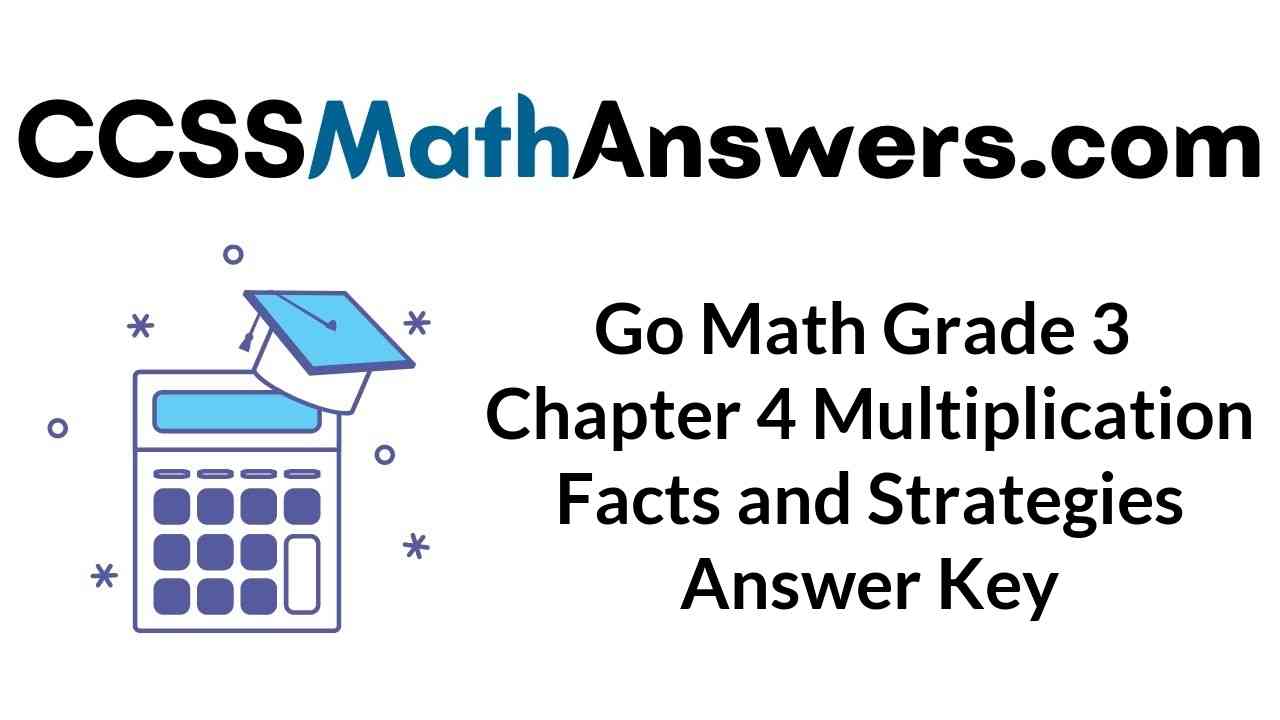
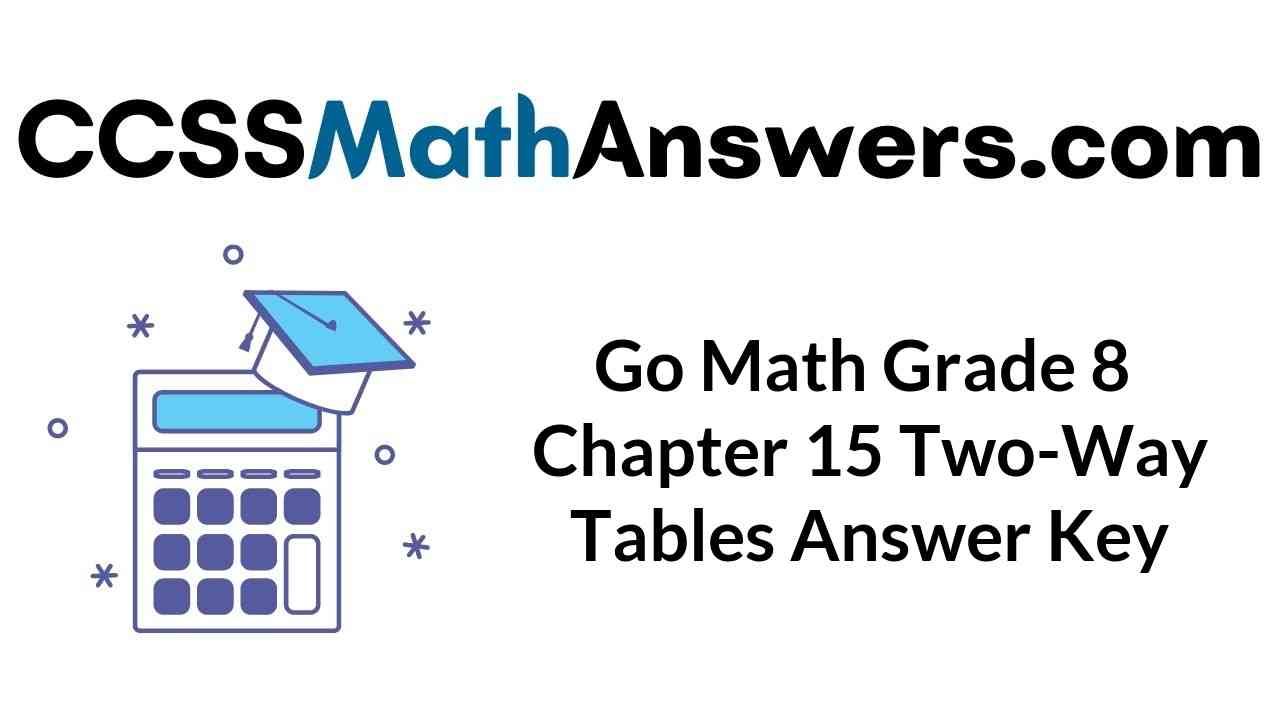
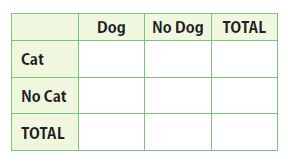




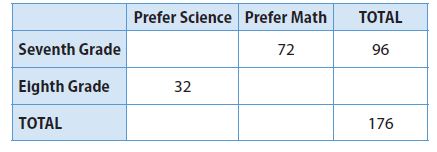



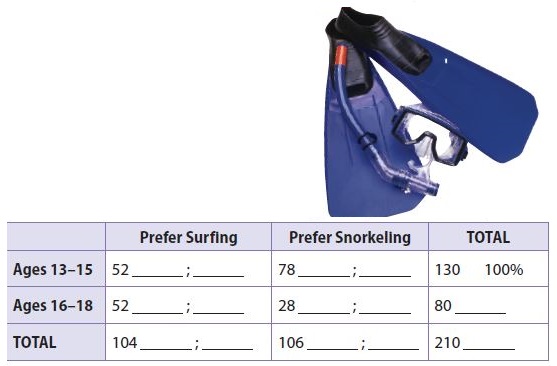


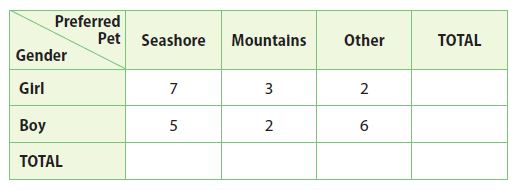
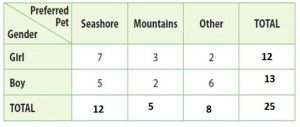
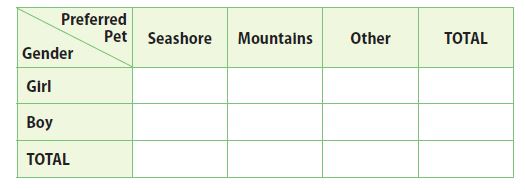
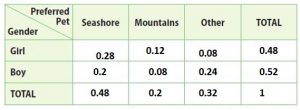




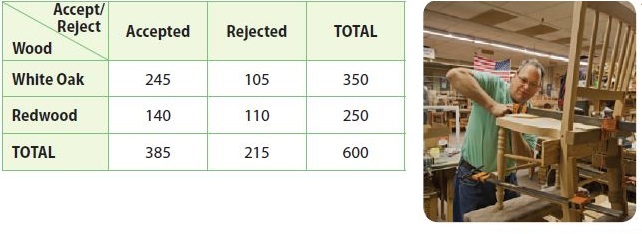
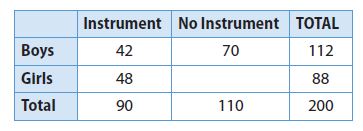


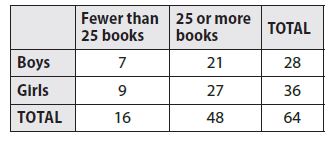
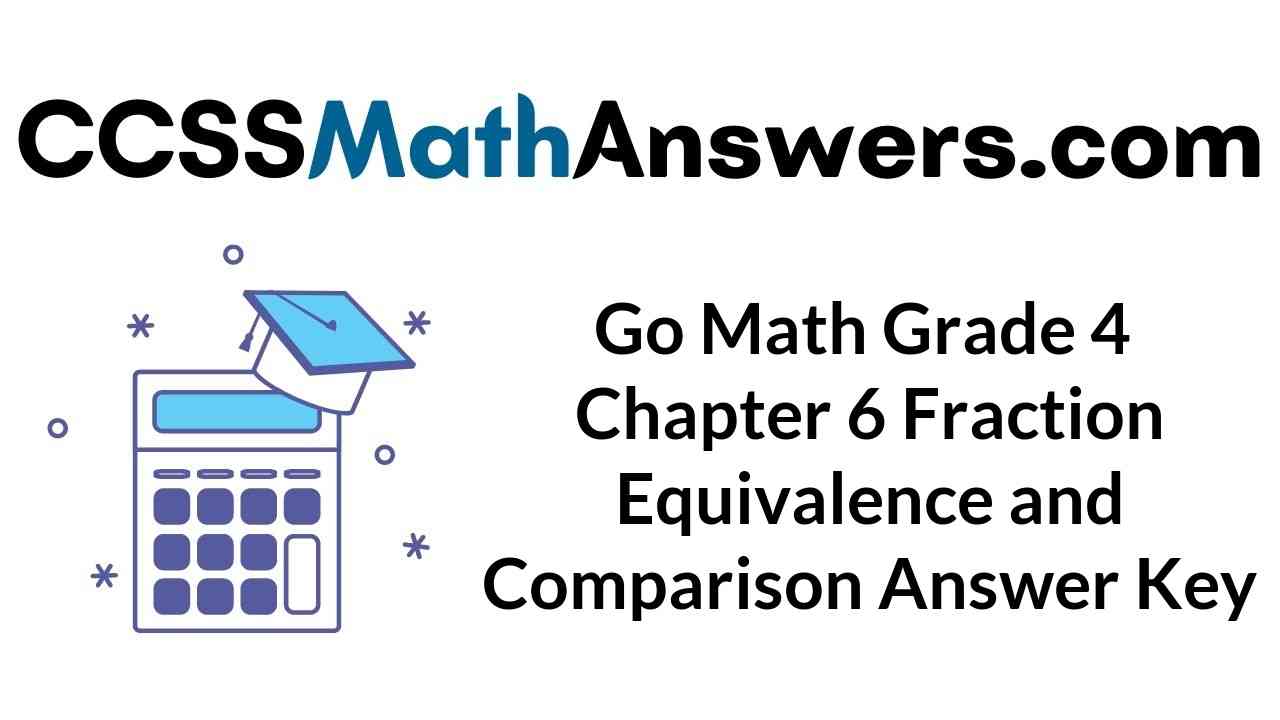

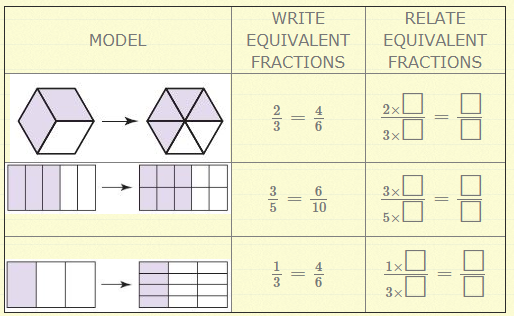
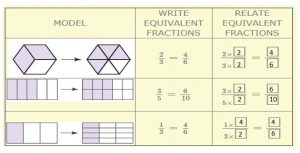
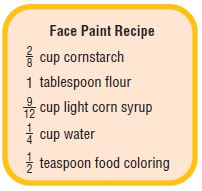


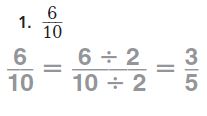
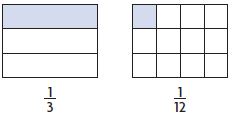
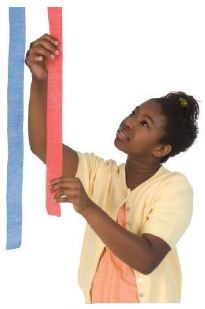
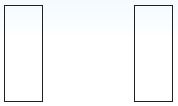
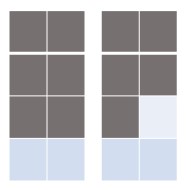
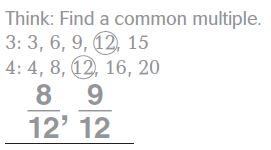
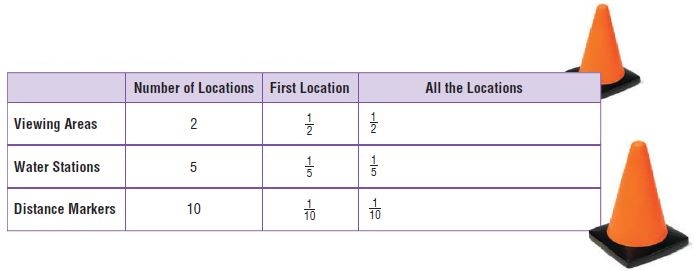

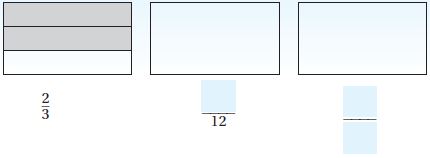



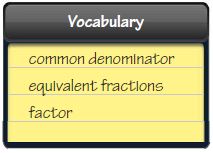

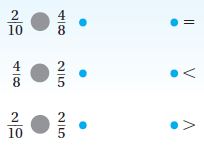


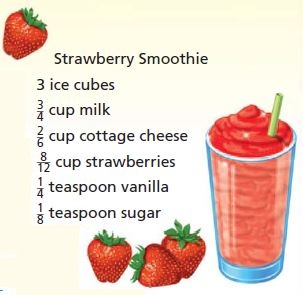
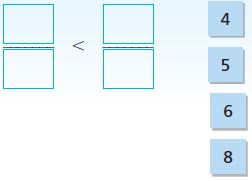
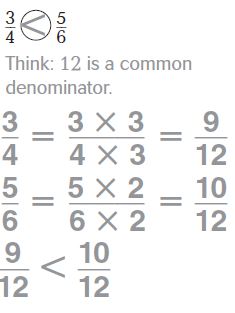


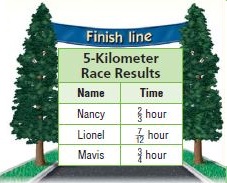
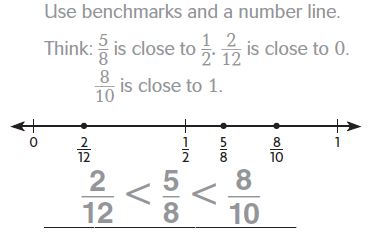



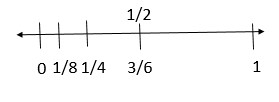

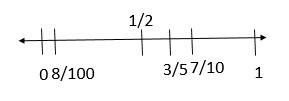


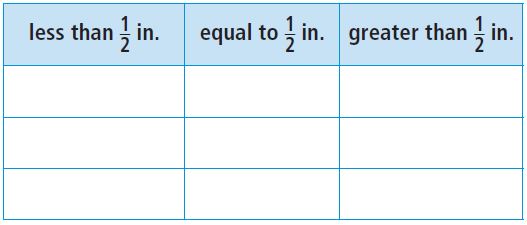
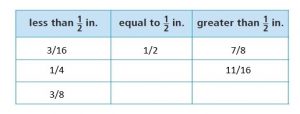
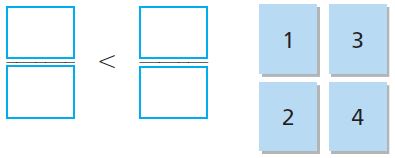
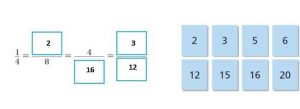
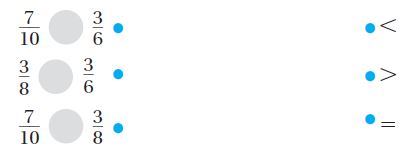
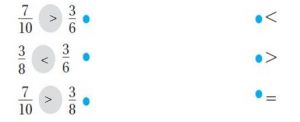
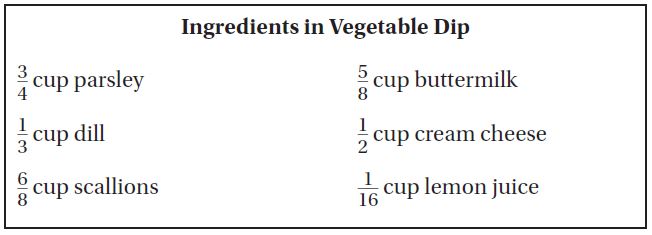
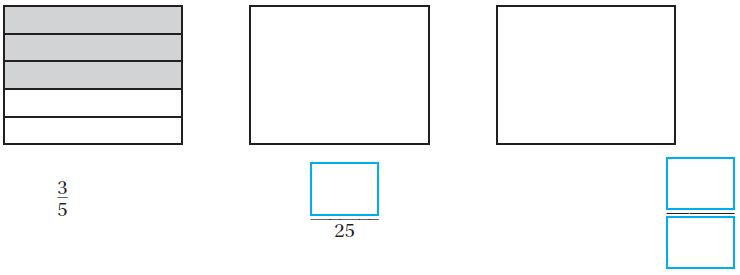

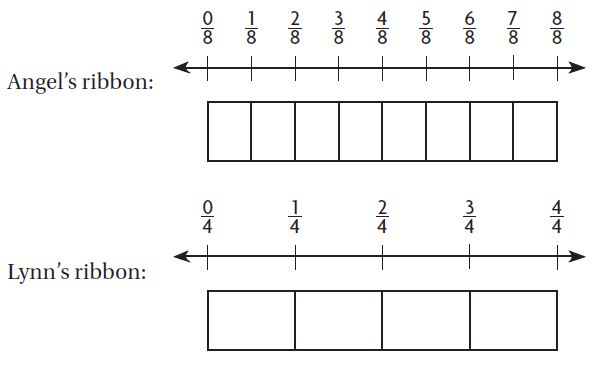
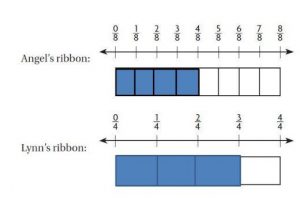

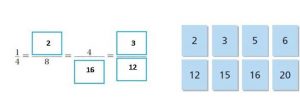





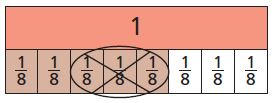


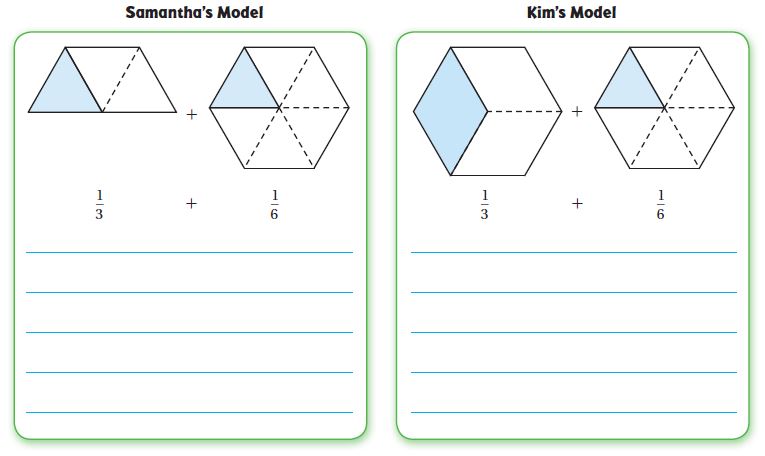
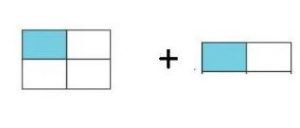
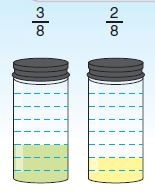

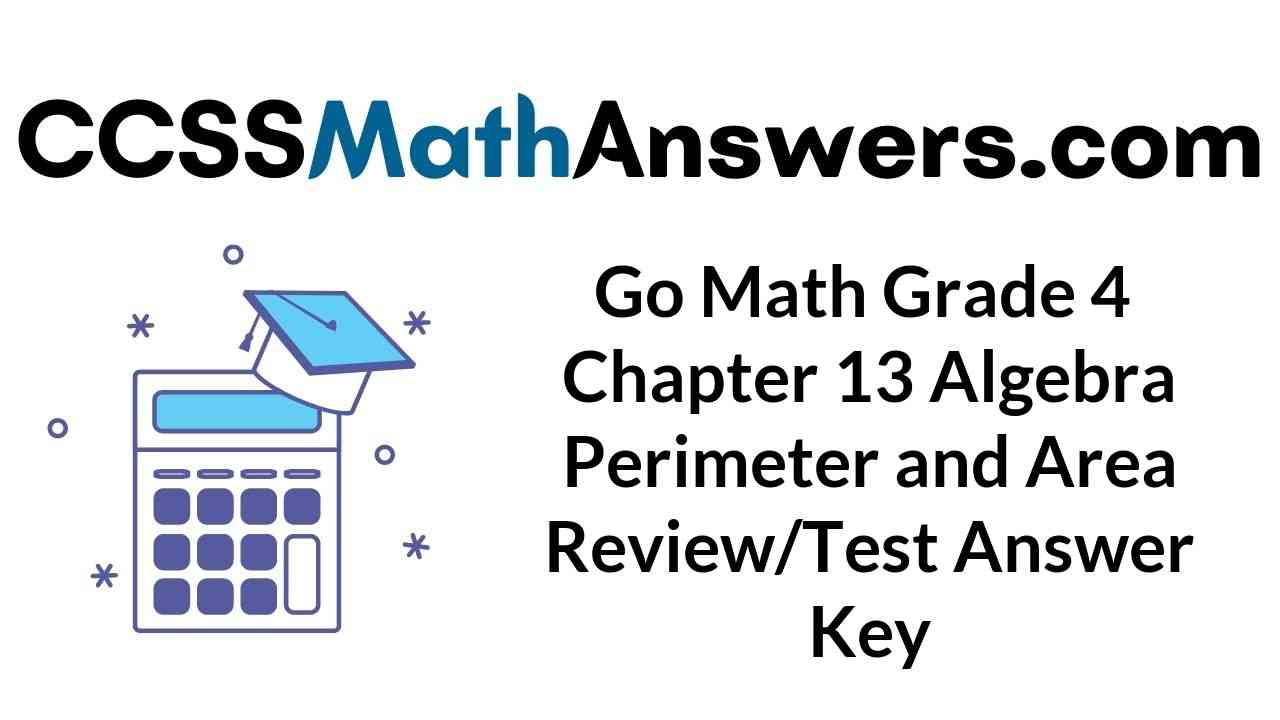
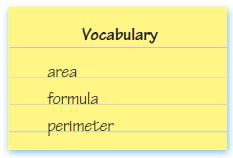
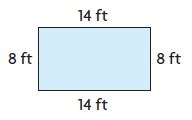
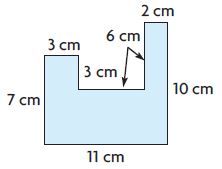
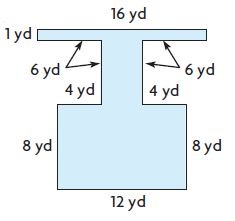




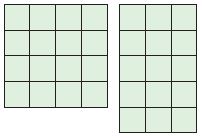
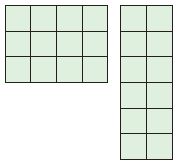
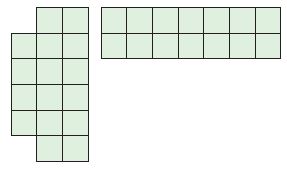

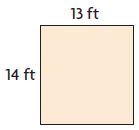


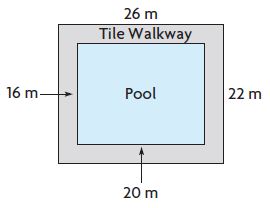
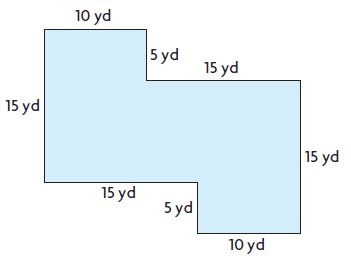
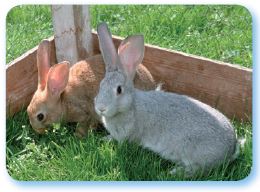
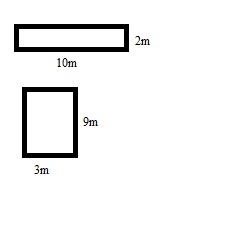
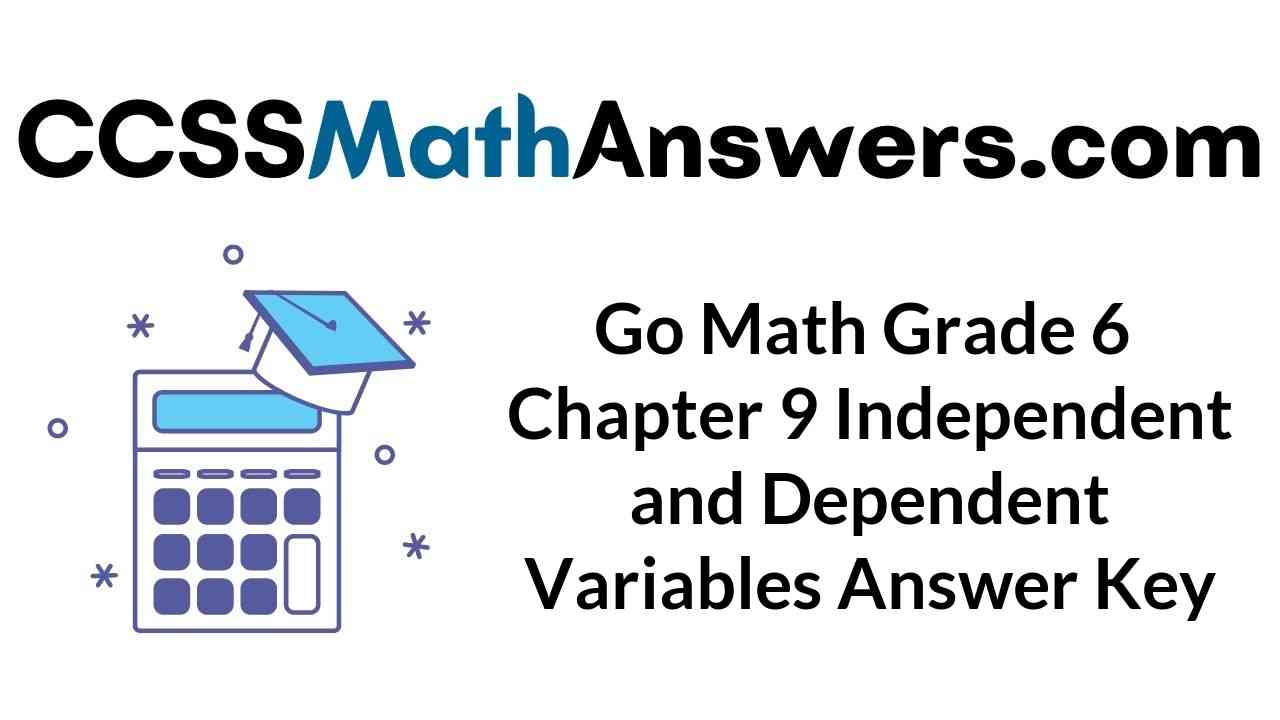

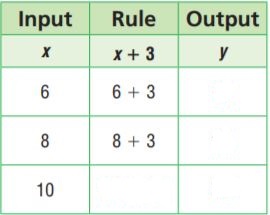


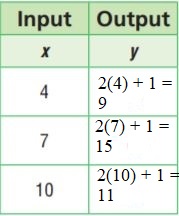


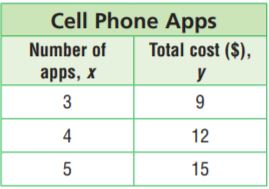
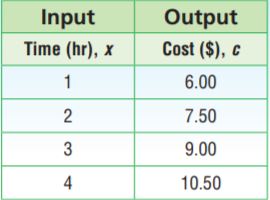

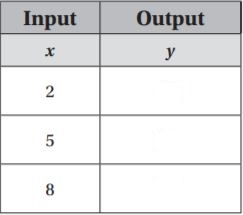
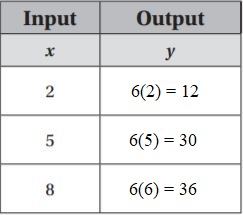


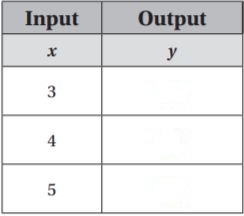
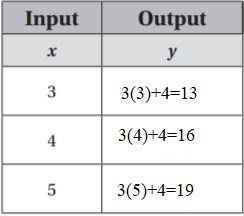


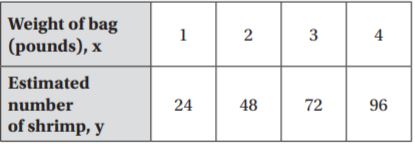
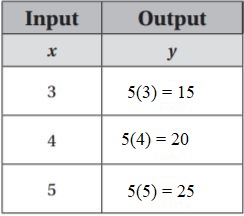

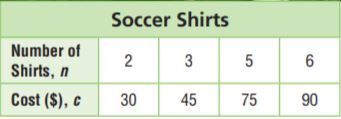
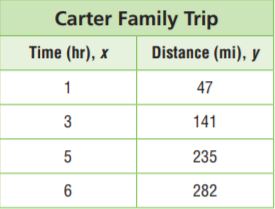





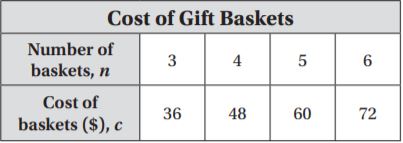


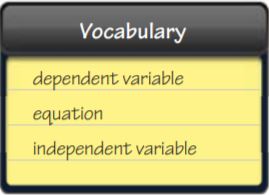






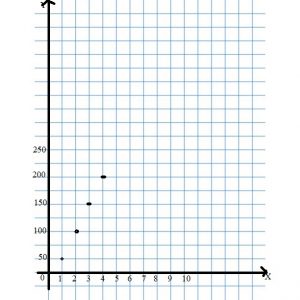

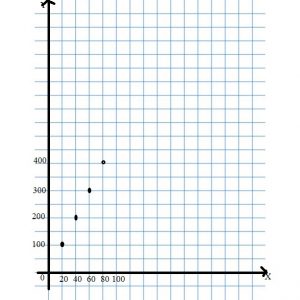

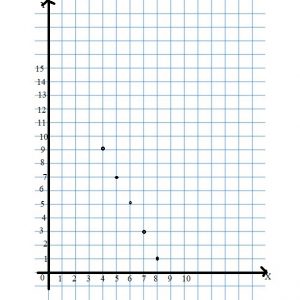

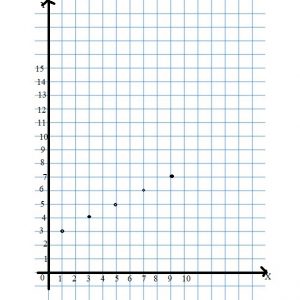



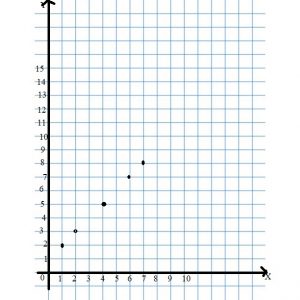
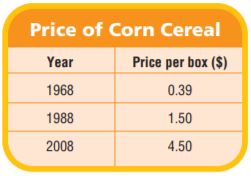




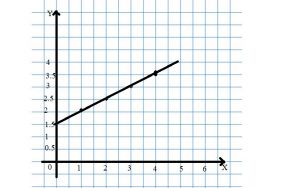



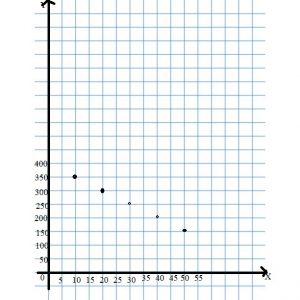

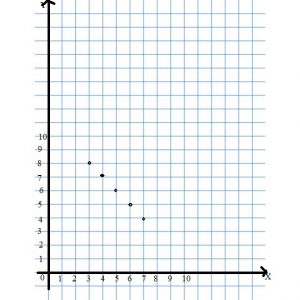

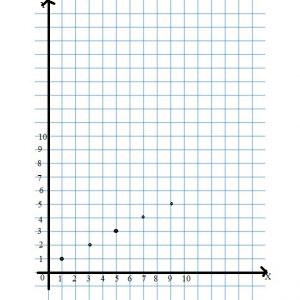

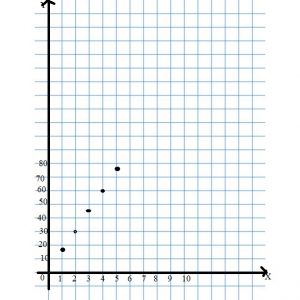

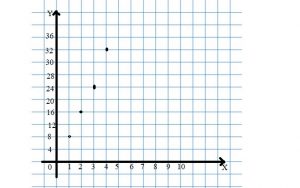


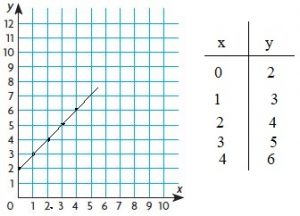
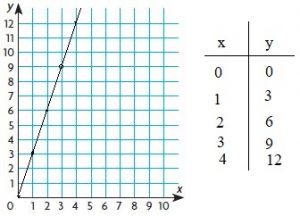
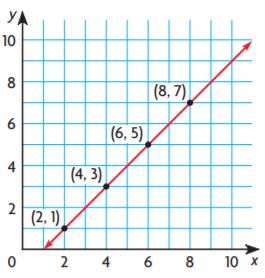
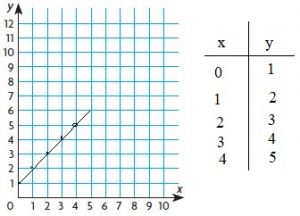
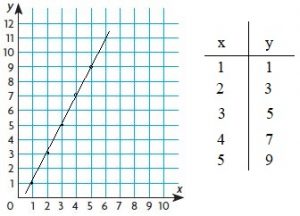
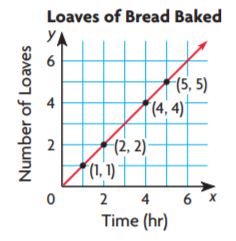


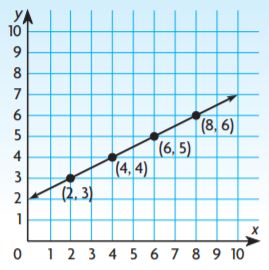
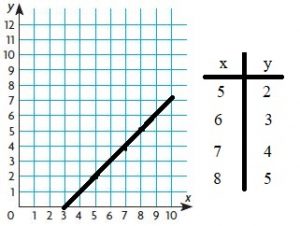
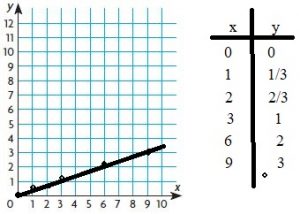
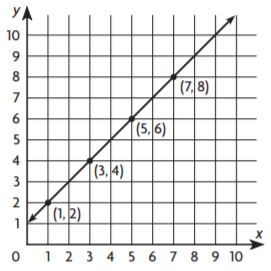
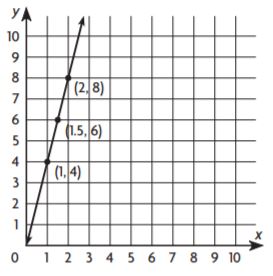
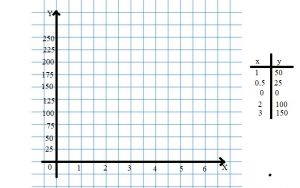
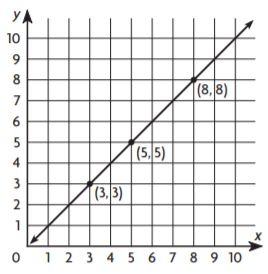
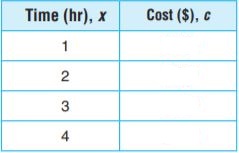
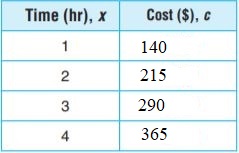
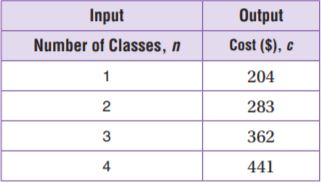


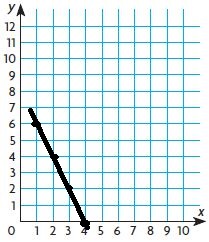
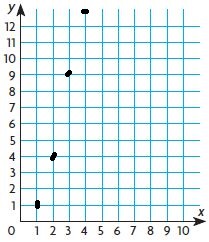
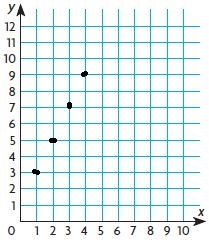
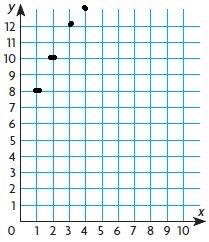

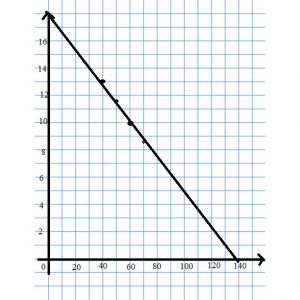

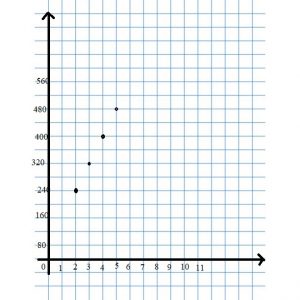
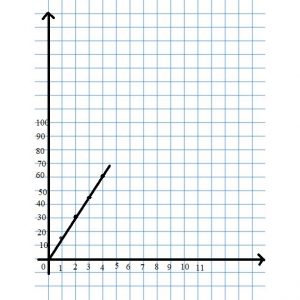

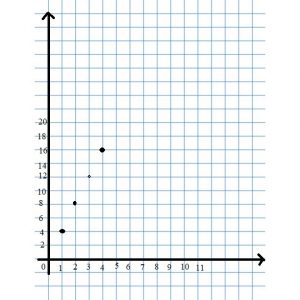
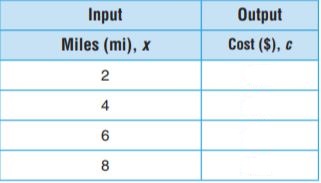
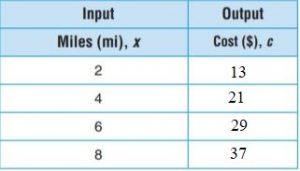
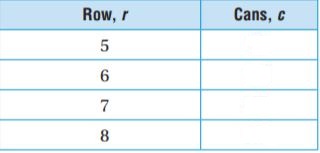
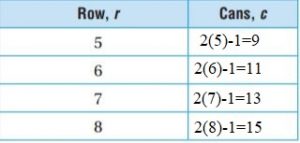

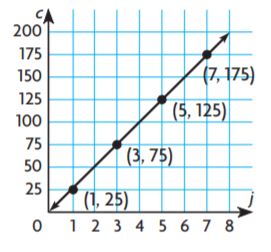
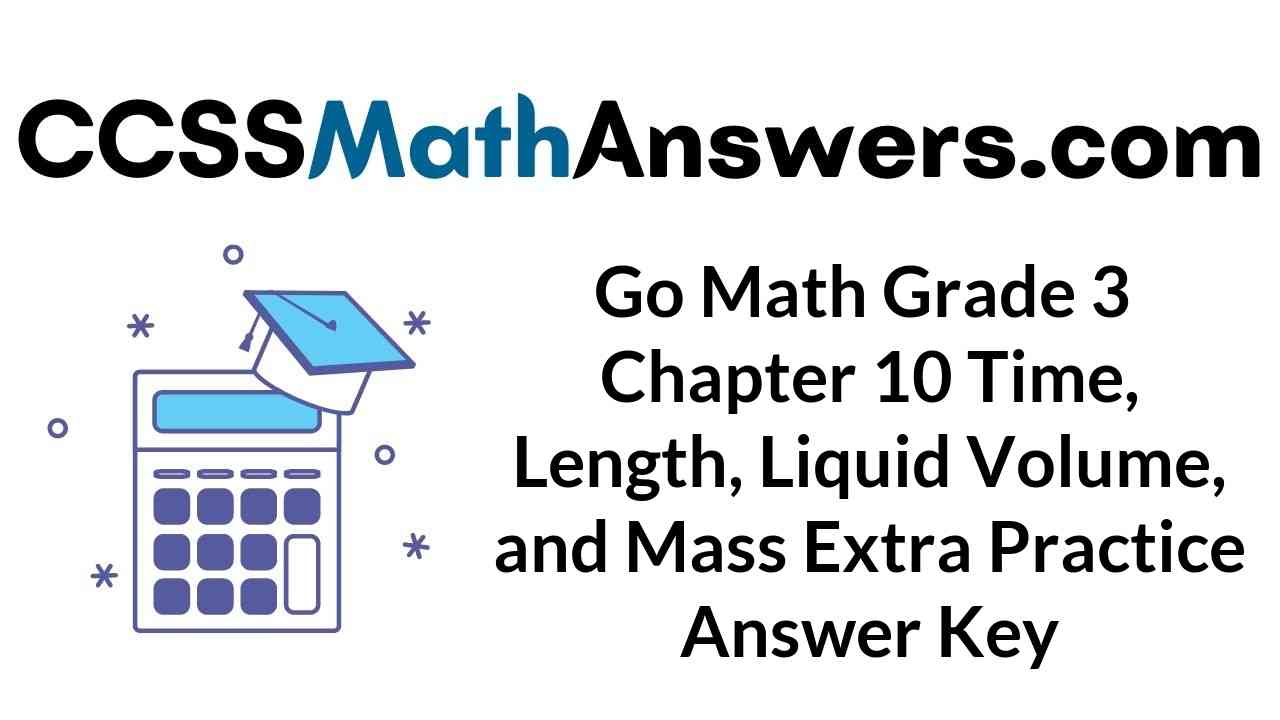

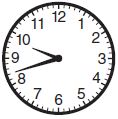
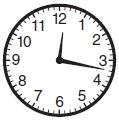




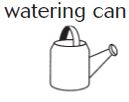
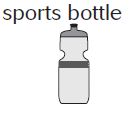




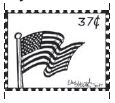



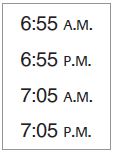
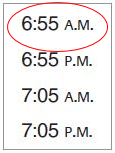

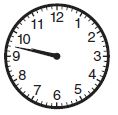
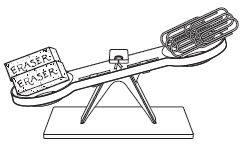
 the mass of the paper clips.
the mass of the paper clips. the mass of the paper clips.
the mass of the paper clips.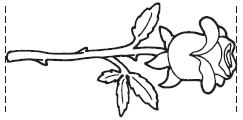




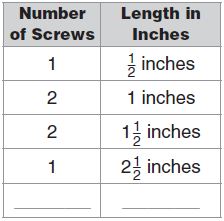
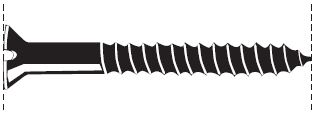
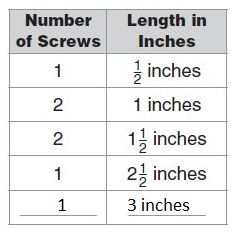
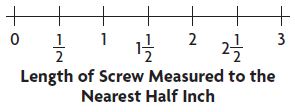
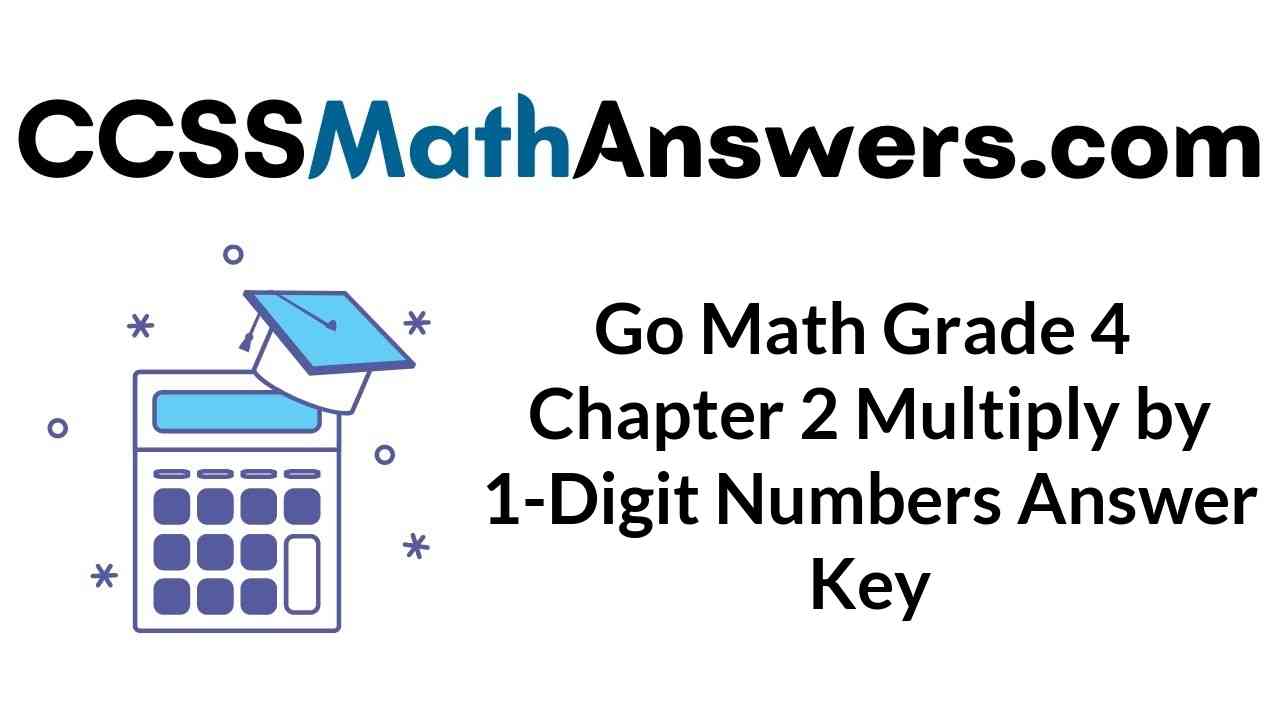












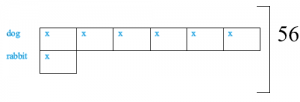


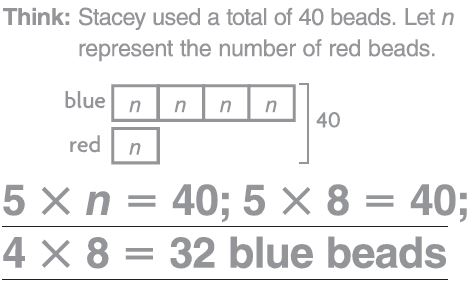

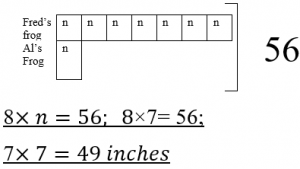
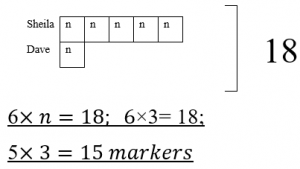
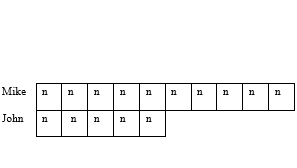

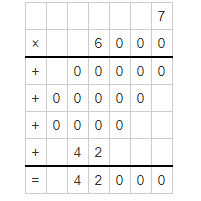
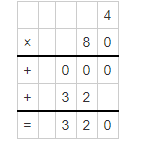
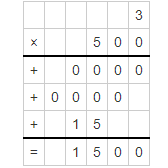
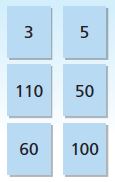

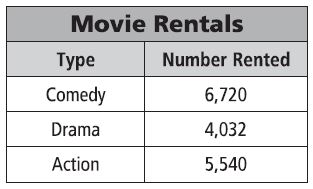

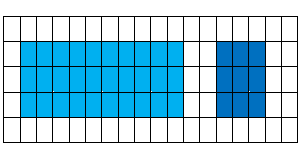

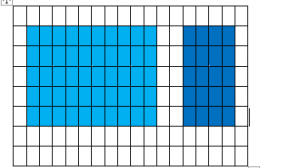



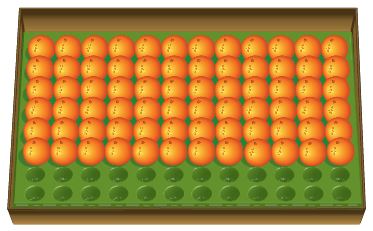
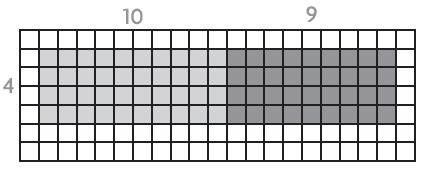
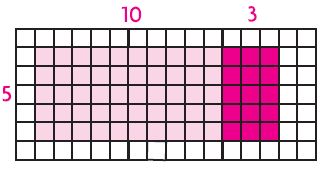


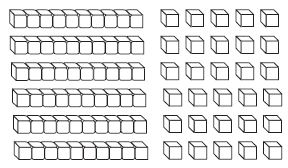

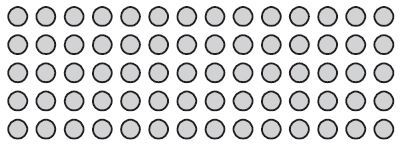

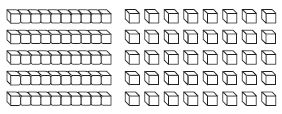

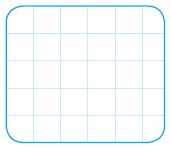
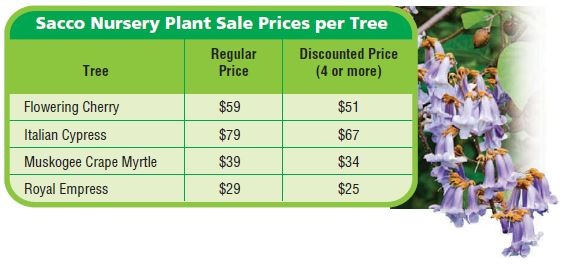



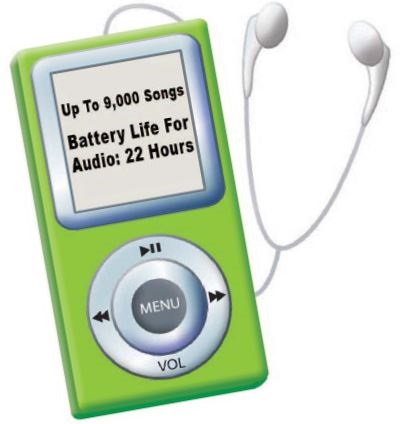

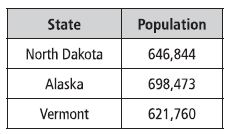
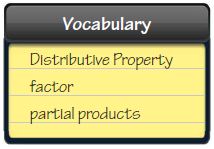



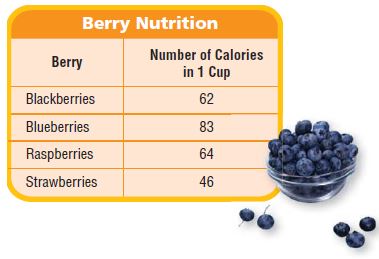
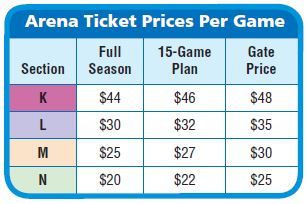
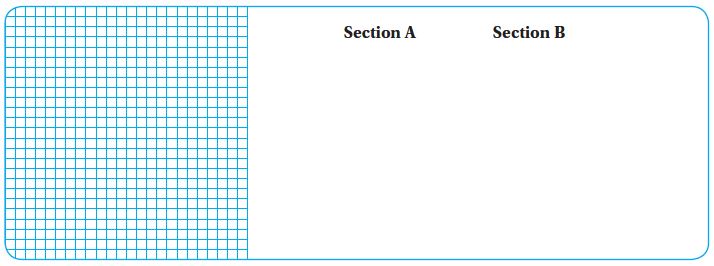
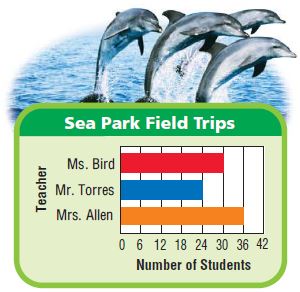




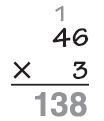
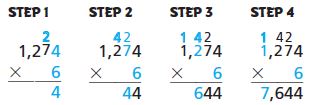

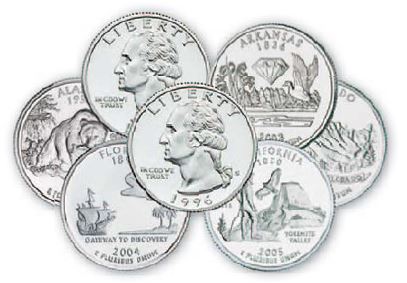

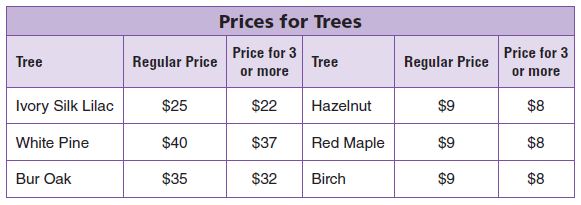
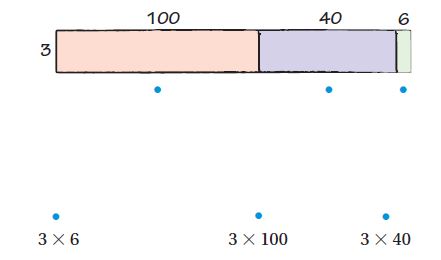
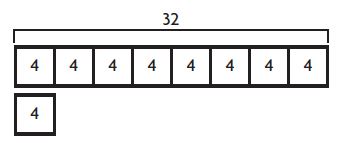
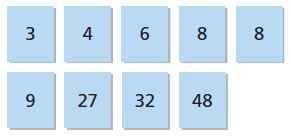
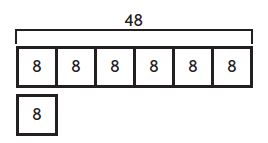

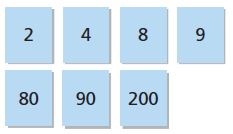


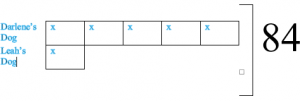
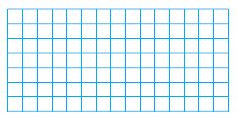
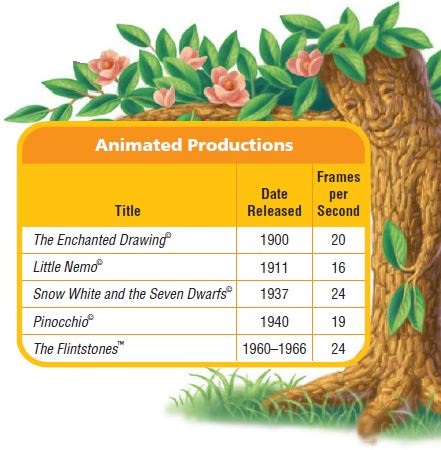
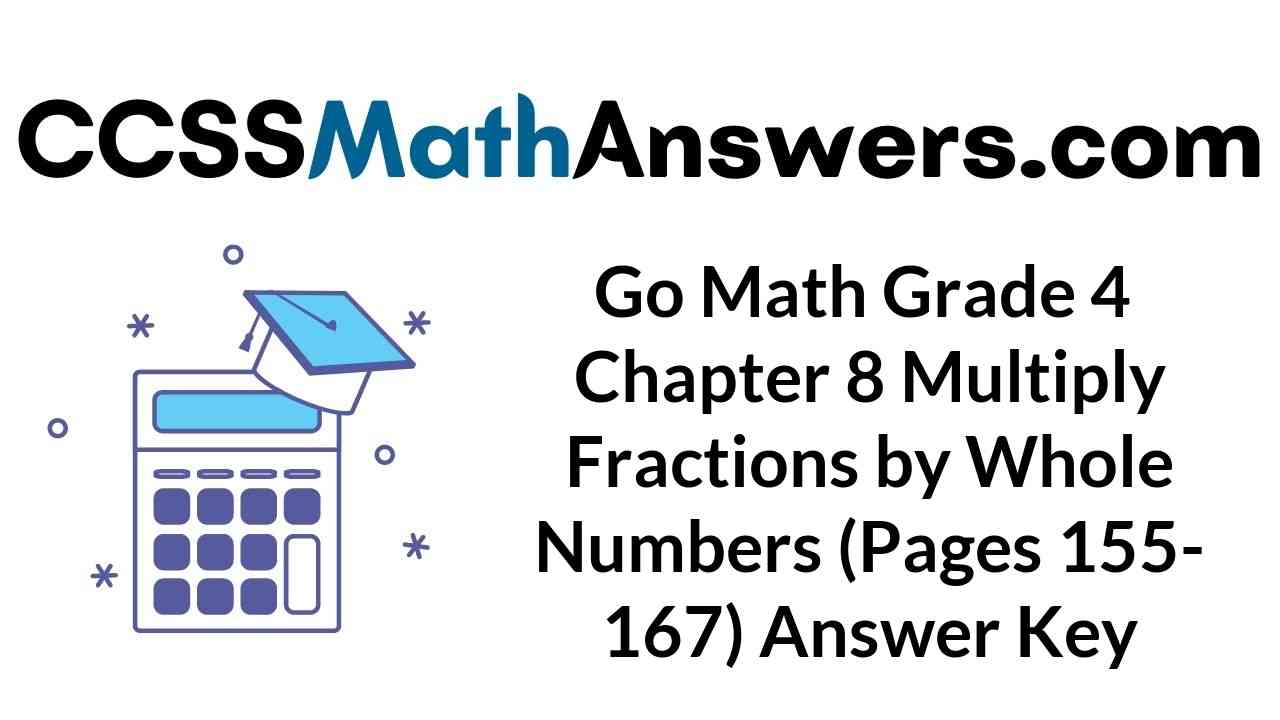





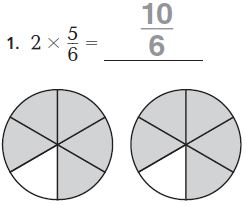













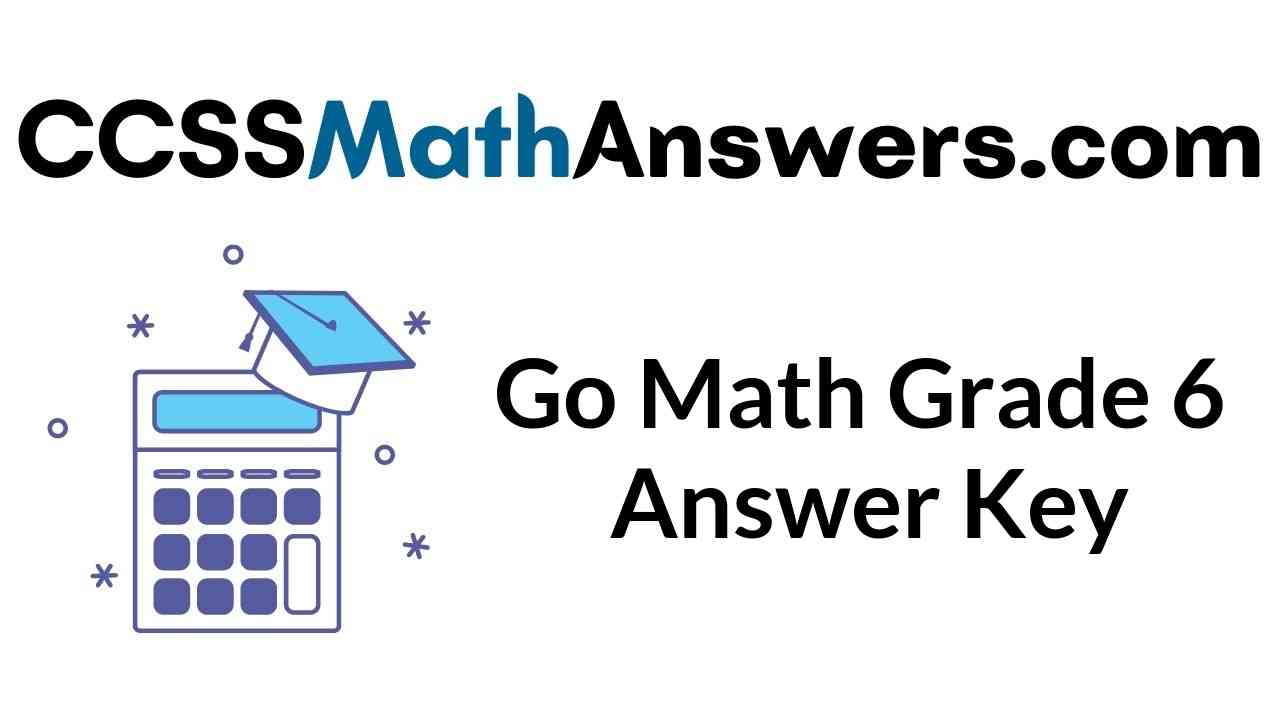
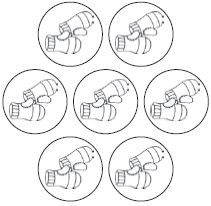
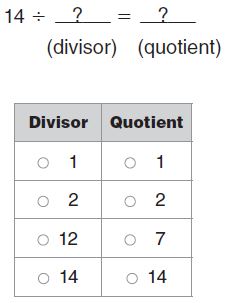
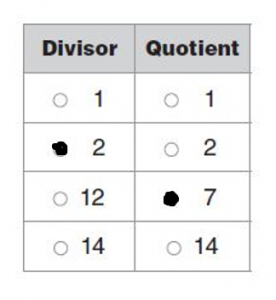

 = 24
= 24 = 24 ÷ 4
= 24 ÷ 4 = 24
= 24



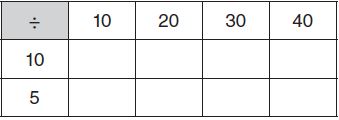
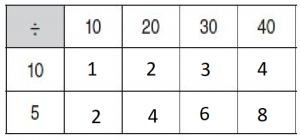
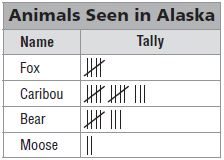
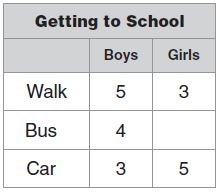
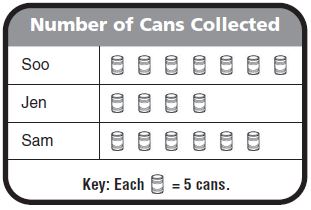
 than
than  .
.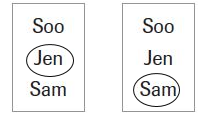
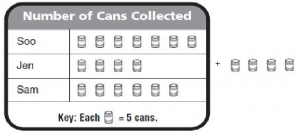
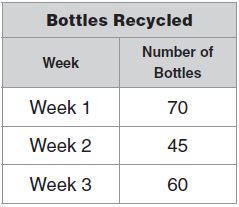
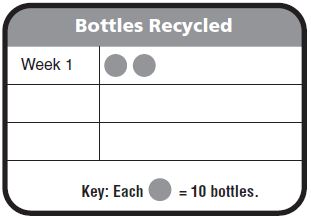
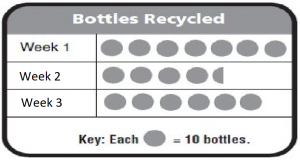

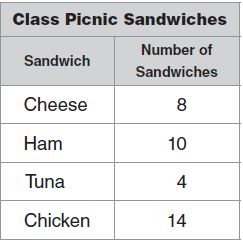

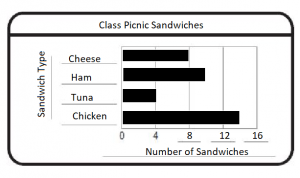
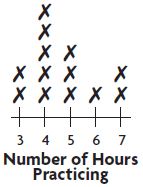
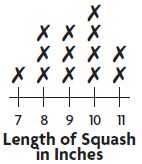

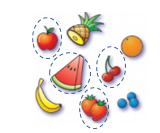

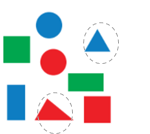





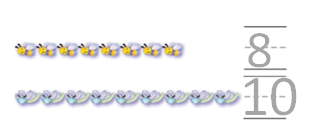




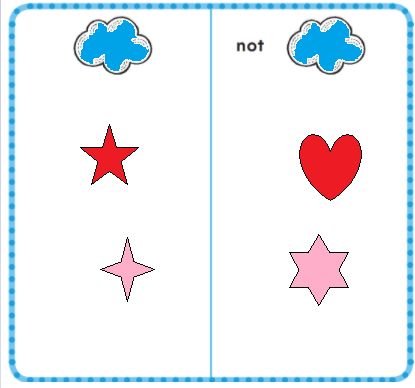

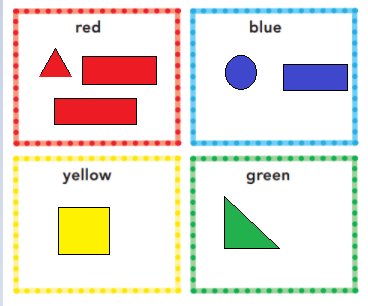

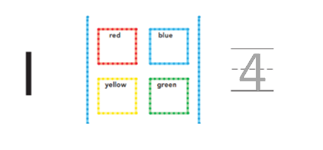

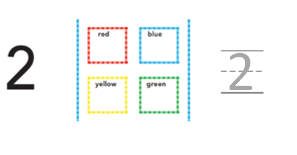



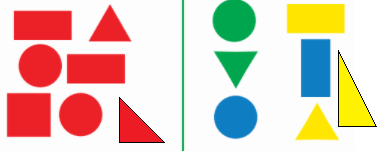
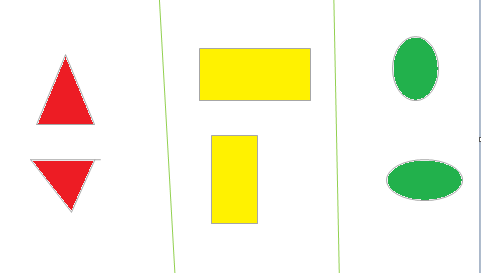

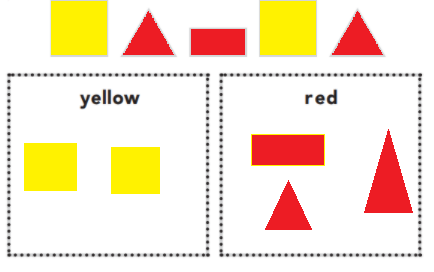

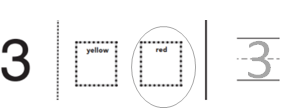

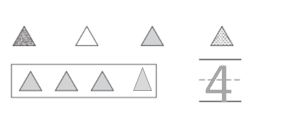

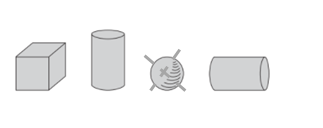






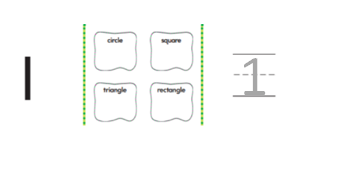

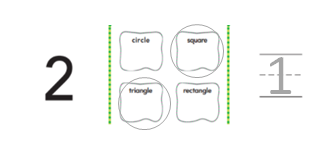

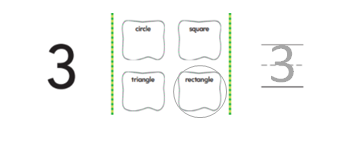

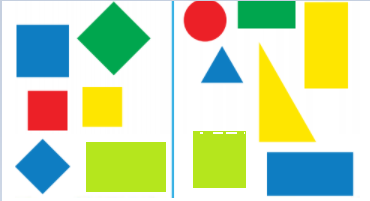



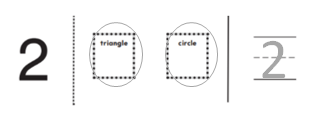

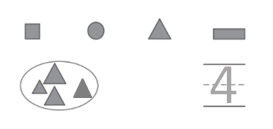

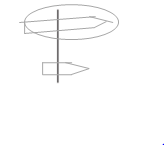

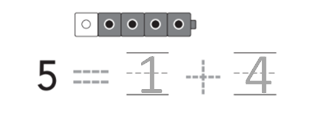



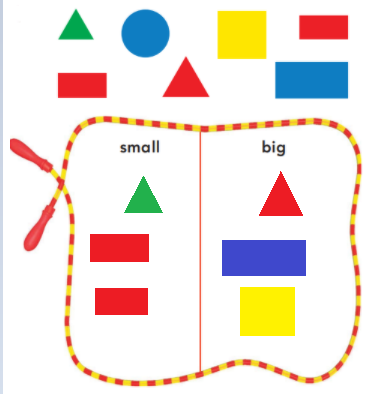

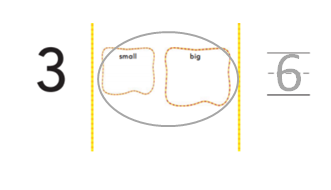

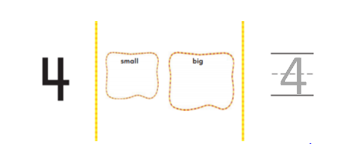

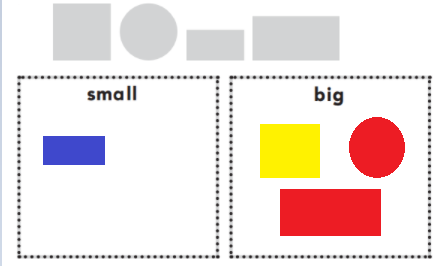

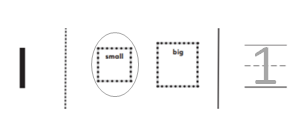

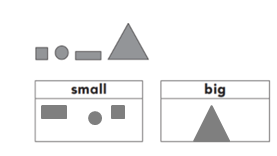



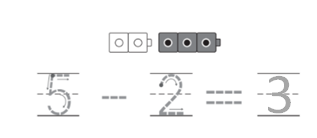



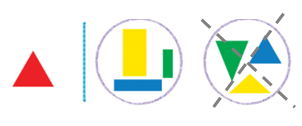

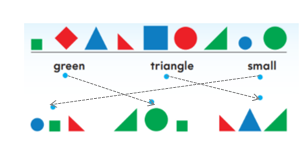

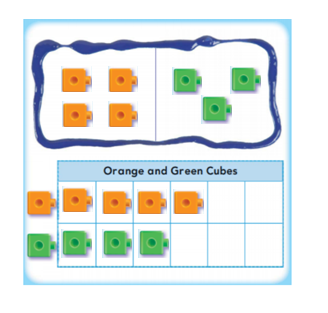



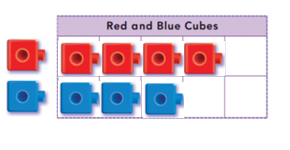



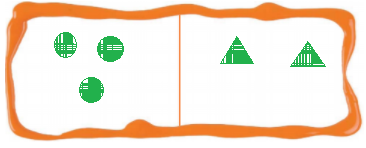

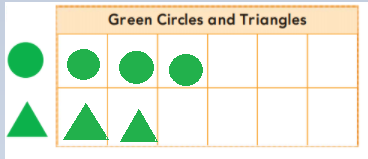



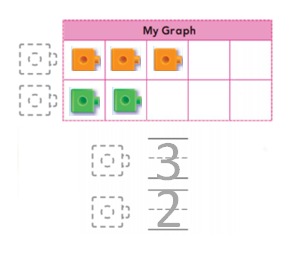



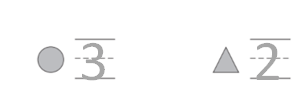

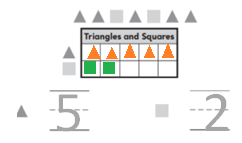

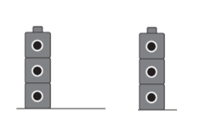













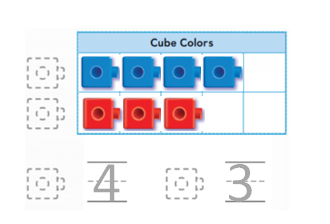


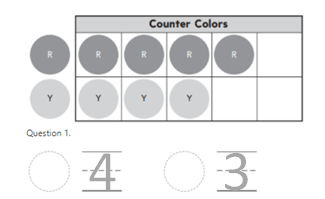



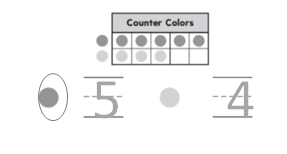

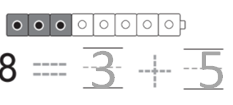

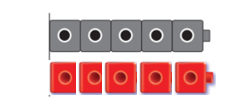

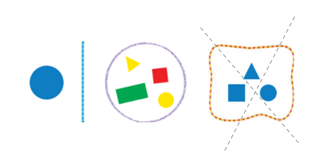

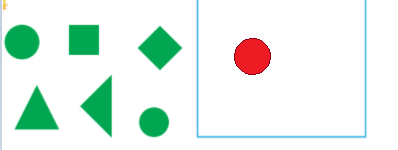

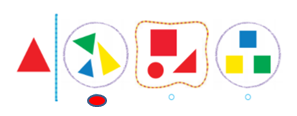

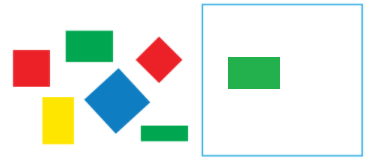



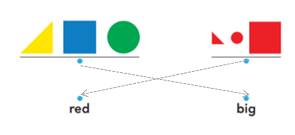



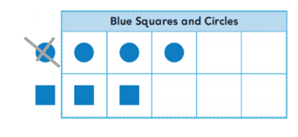

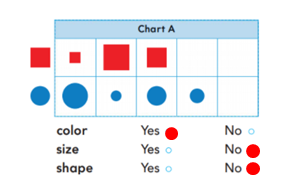

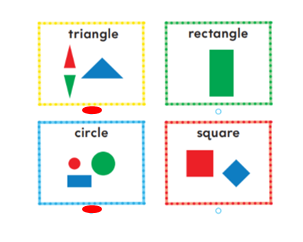

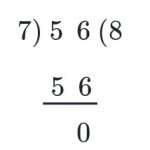
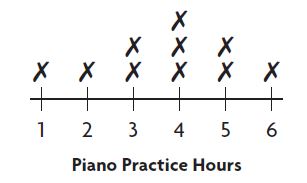
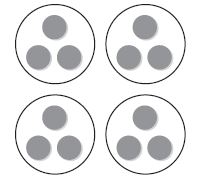
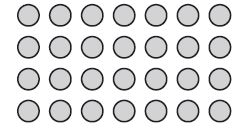
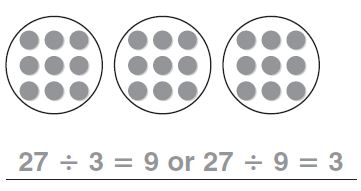
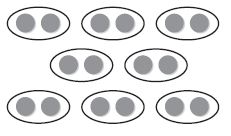

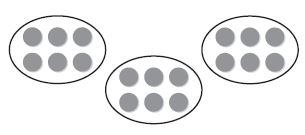

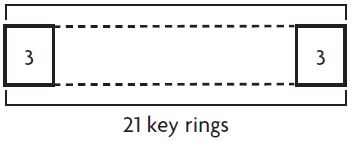
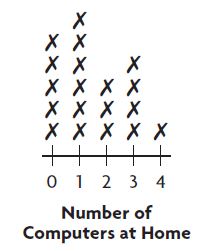
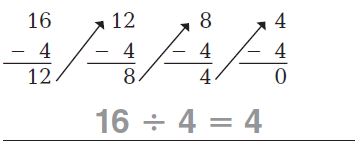



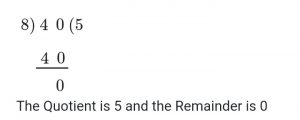
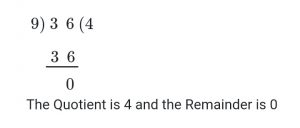










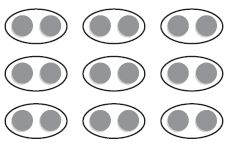
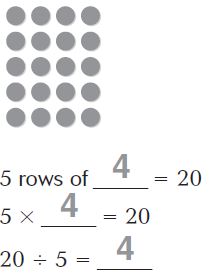
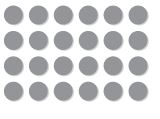

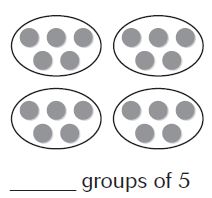
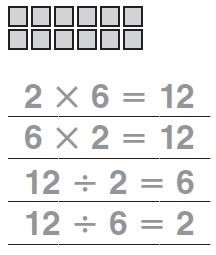


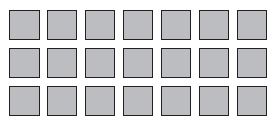

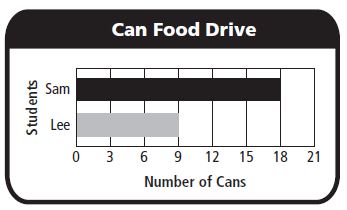
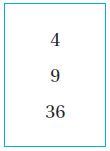 horses in each pen.
horses in each pen.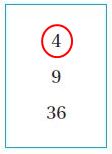 horses in each pan
horses in each pan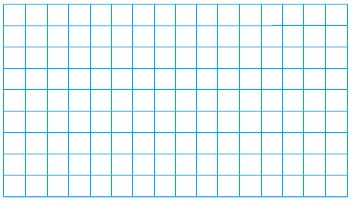
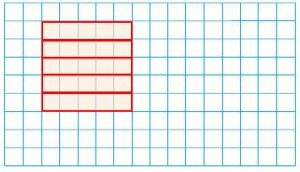
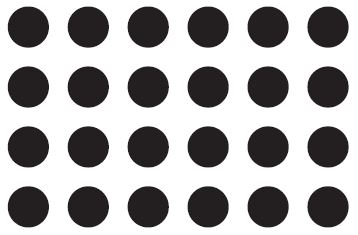
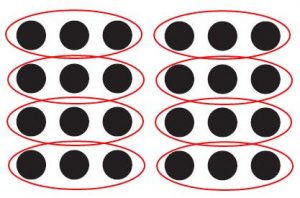





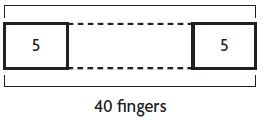


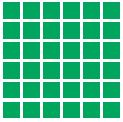

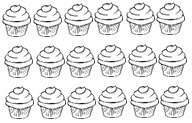

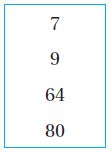 × 8 = 72 72 ÷
× 8 = 72 72 ÷  = 8
= 8 × 8 = 72; 72 ÷
× 8 = 72; 72 ÷ 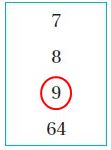 = 8
= 8



